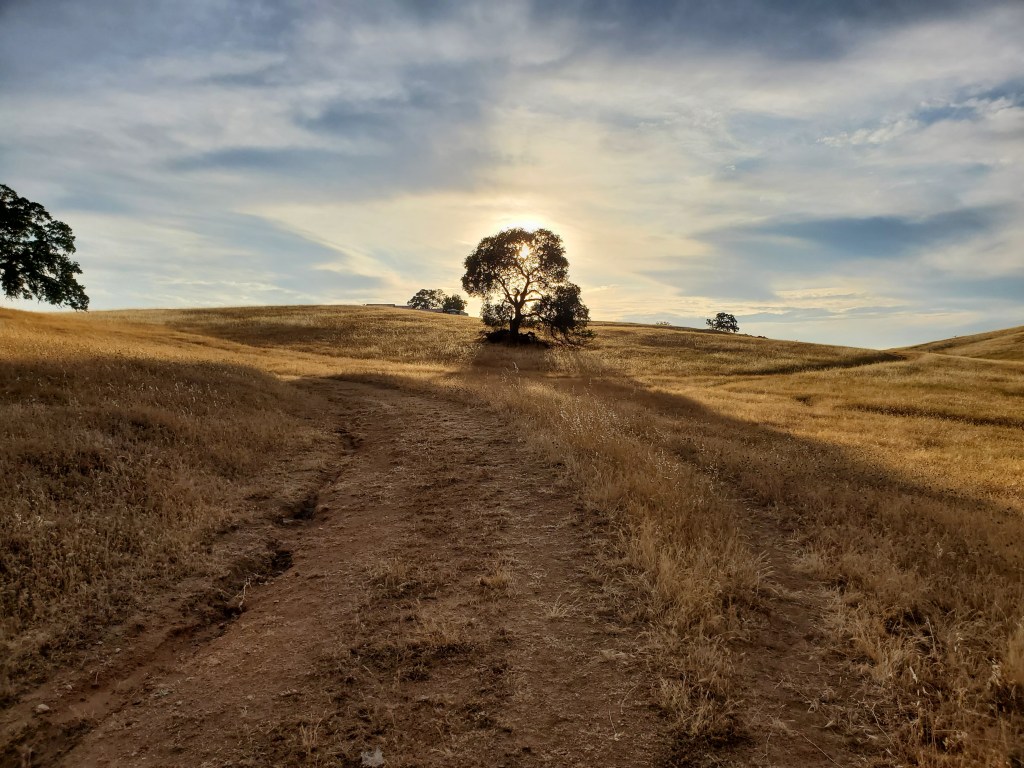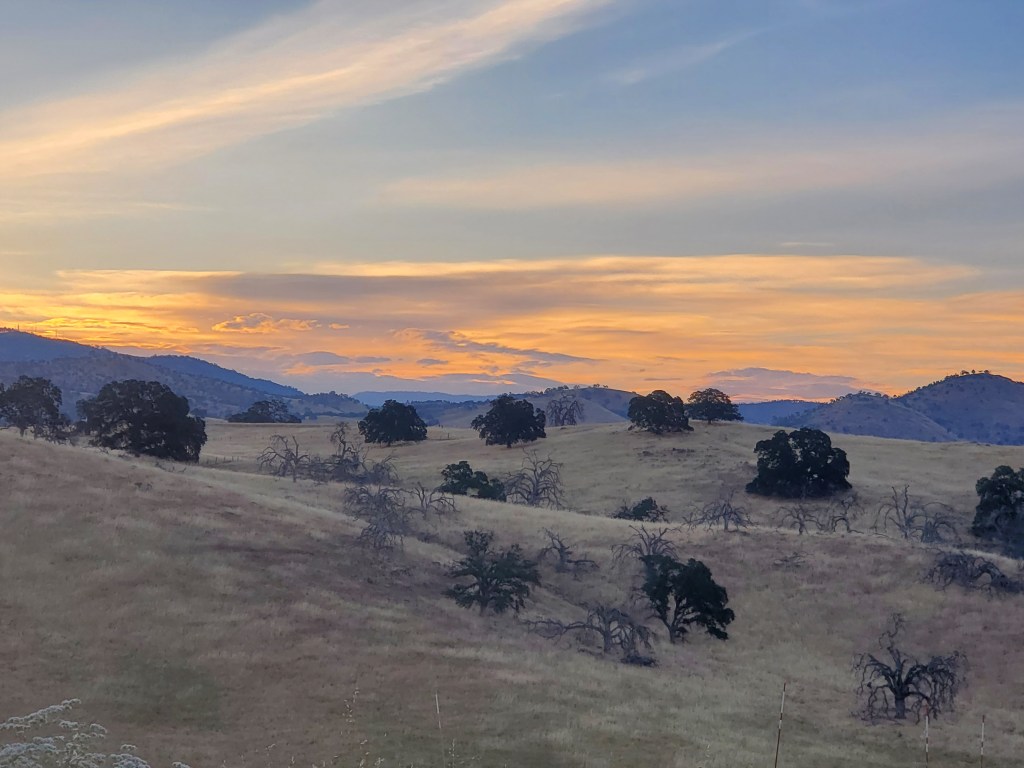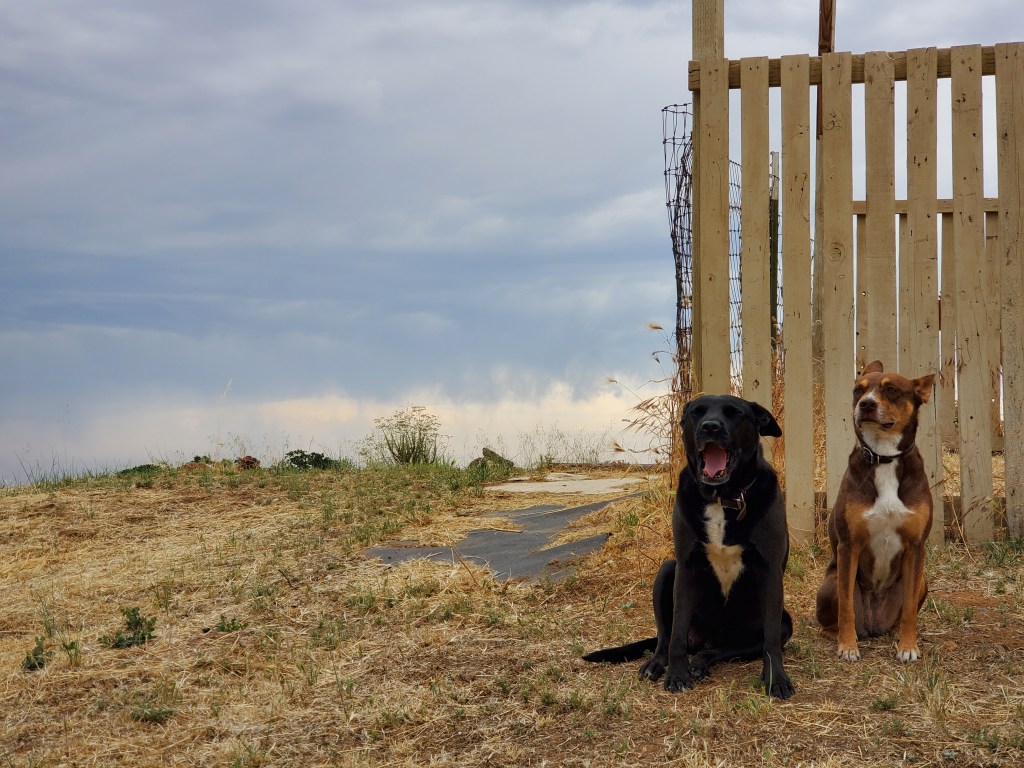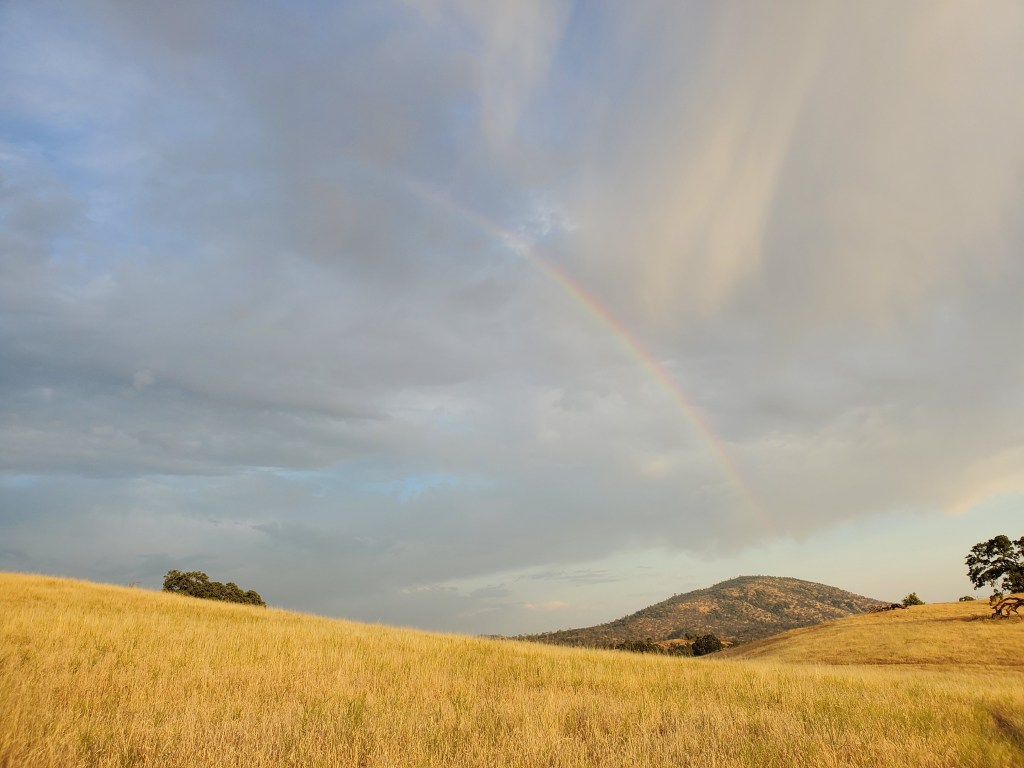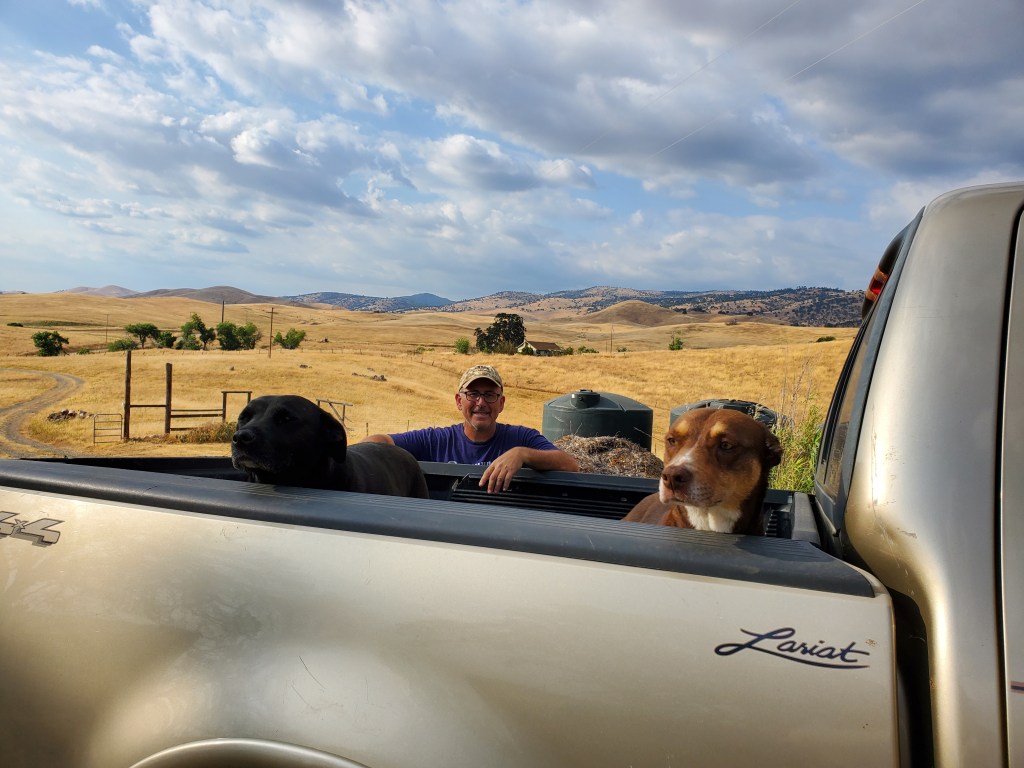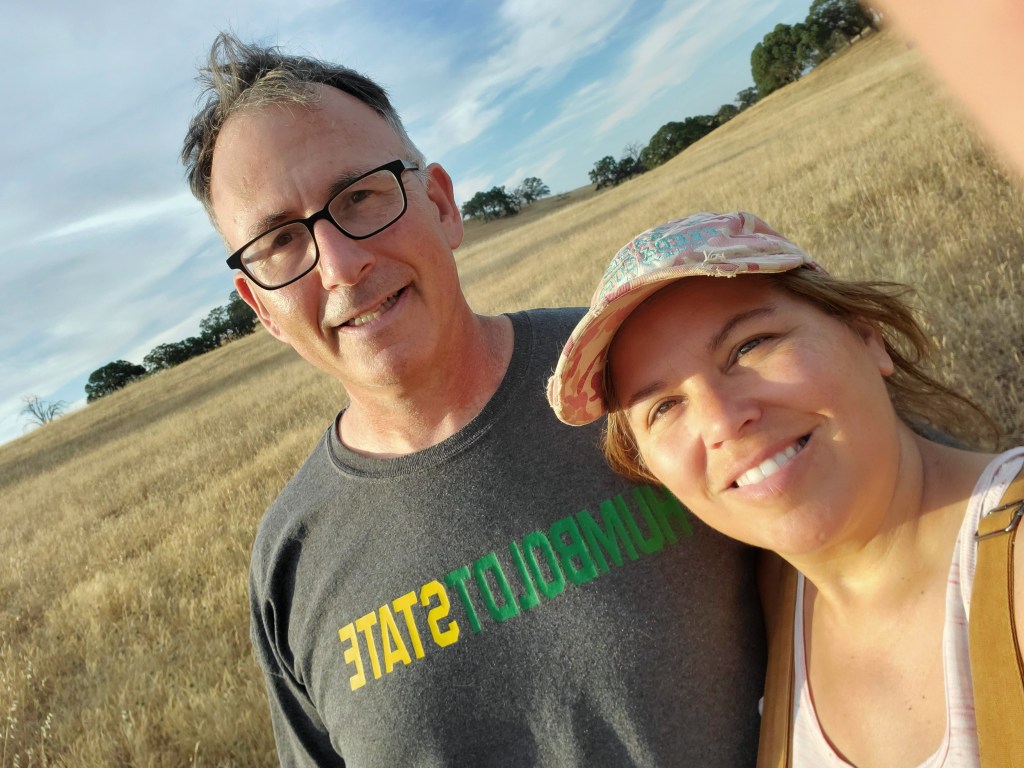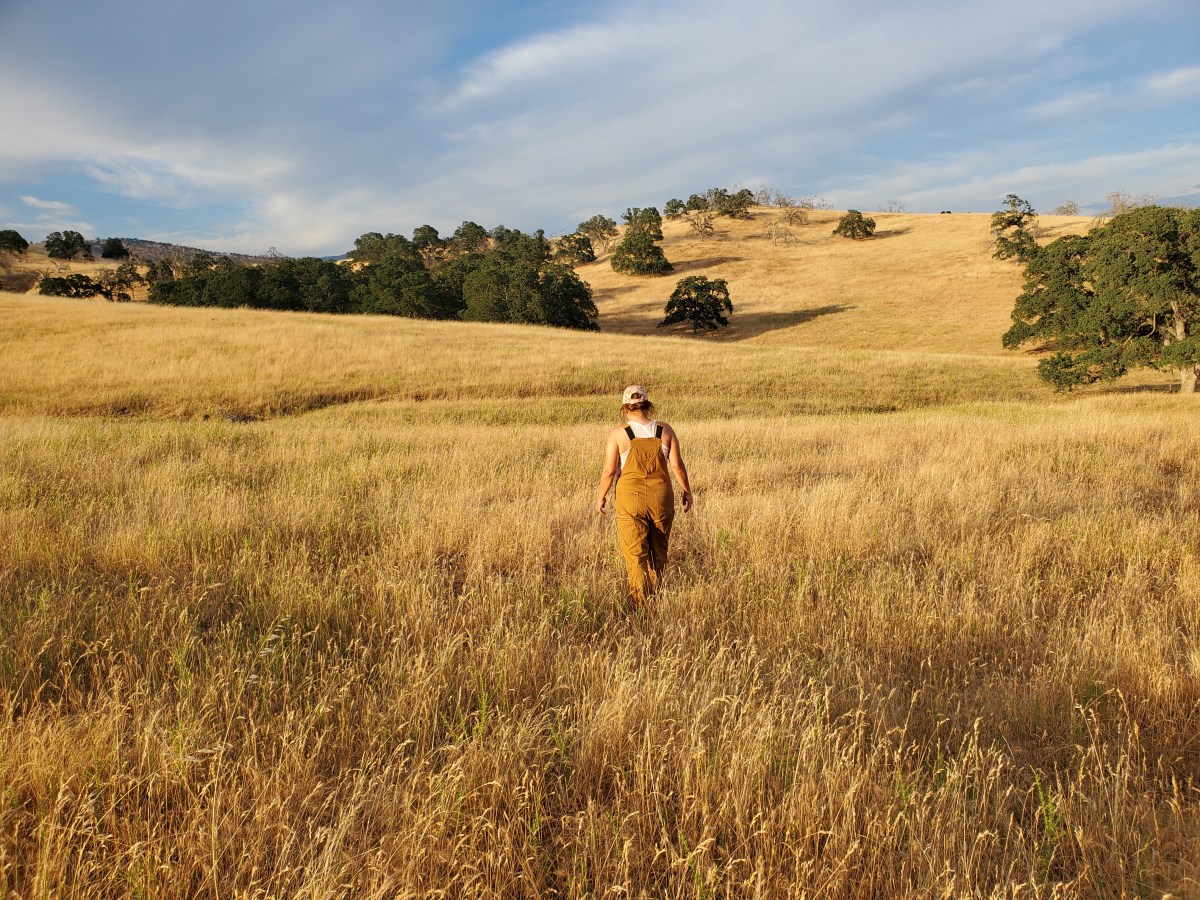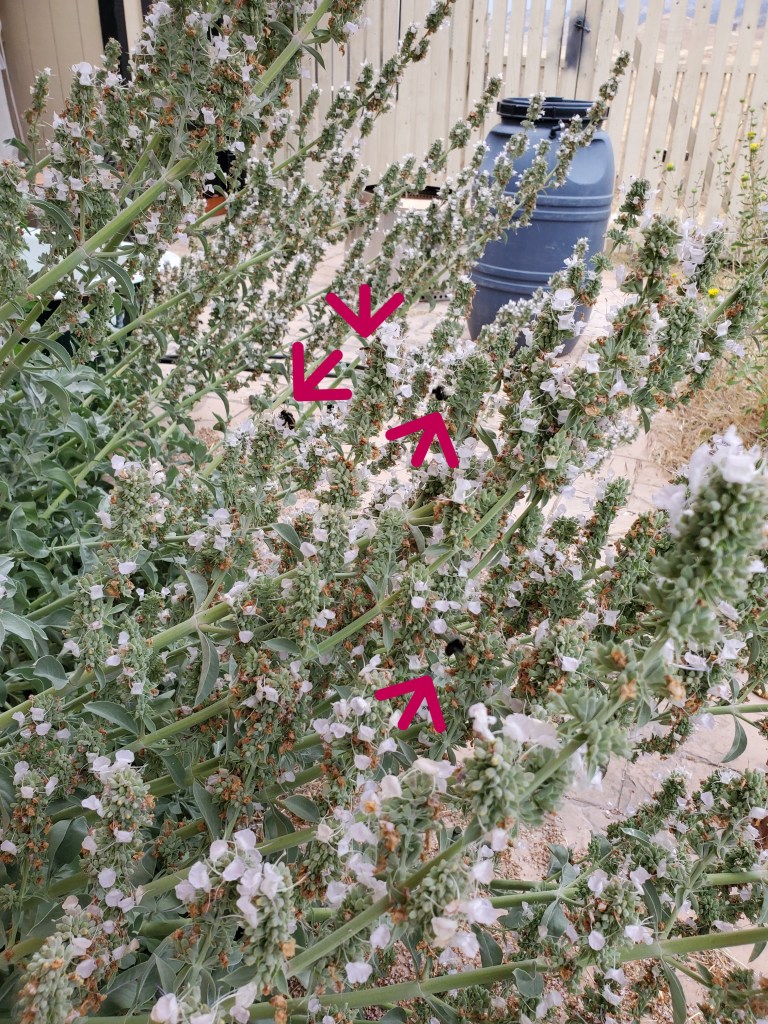
Looking on the bright side – that has been my reflection for the last month. I have come to terms with the fact that the monarchs skipped me this year. I’ve heard reports from many friends and readers that they have spotted a monarch or had multiples in their gardens. All sightings have been friends/family closer to the coast or higher in elevation. They skipped me. I can’t blame them. It has been very cool here. It seems that many hung out in gardens on the other side of the coast range for days waiting out the weather. Then, they were able to cruise another 100 or so miles, past me, to just up the mountain. Oh well. I am glad they are surviving and making their journey.
Maybe they will stop on the way back – or next year.
We have so much gorgeous milkweed – at least four different species – narrowleaf, ca milkweed, showy and woolly pod. They are all healthy, strong and growing well. I thought, “Well, maybe someone will get some use from them”. We have had only a handful of butterflies, which I mentioned and identified in my last post. I’ve seen just one other since, a painted lady (I think – since they flit so fast). No butterflies…but…something else just as exciting – bumble bees, and almost 30 of them at one time!

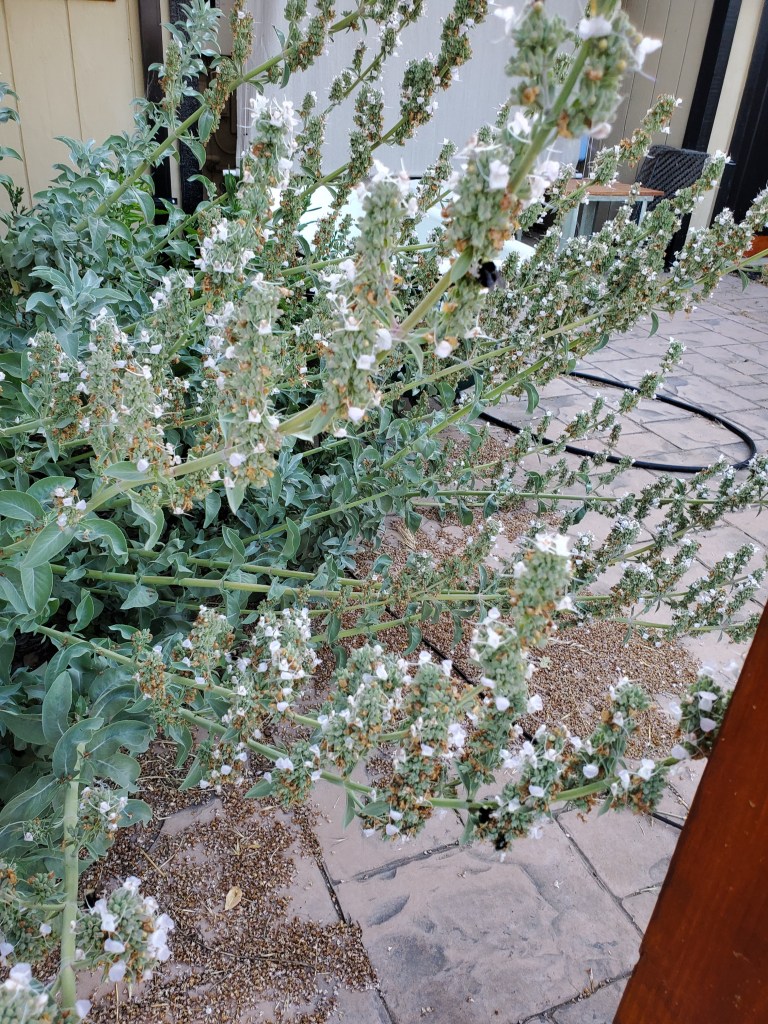
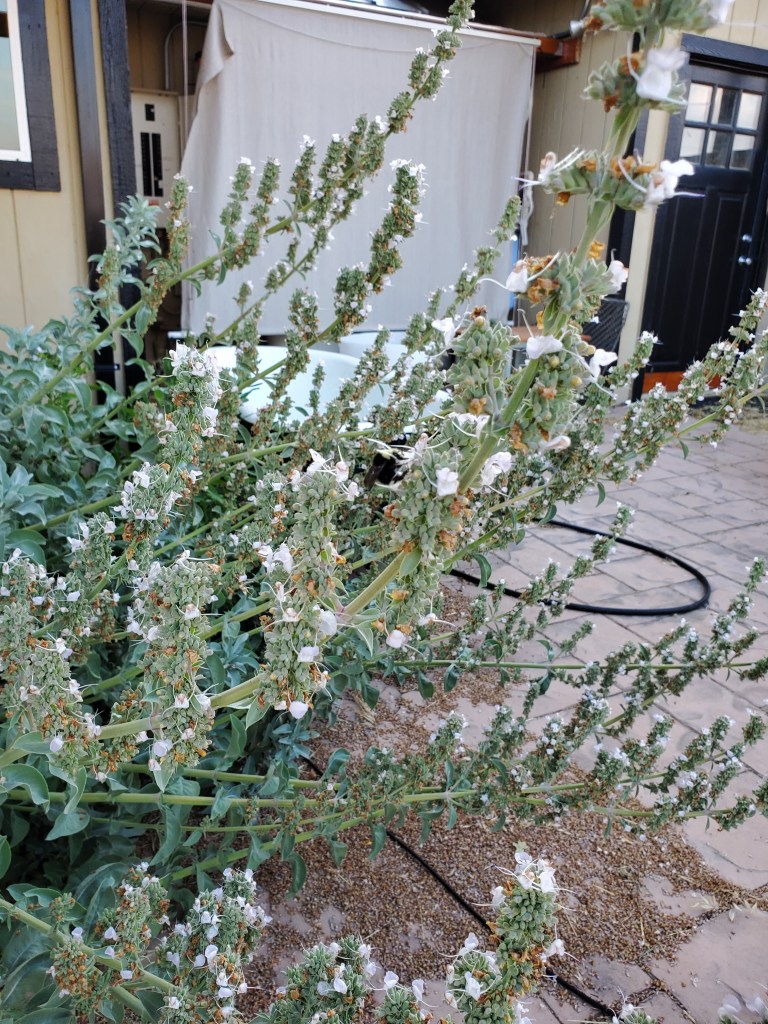


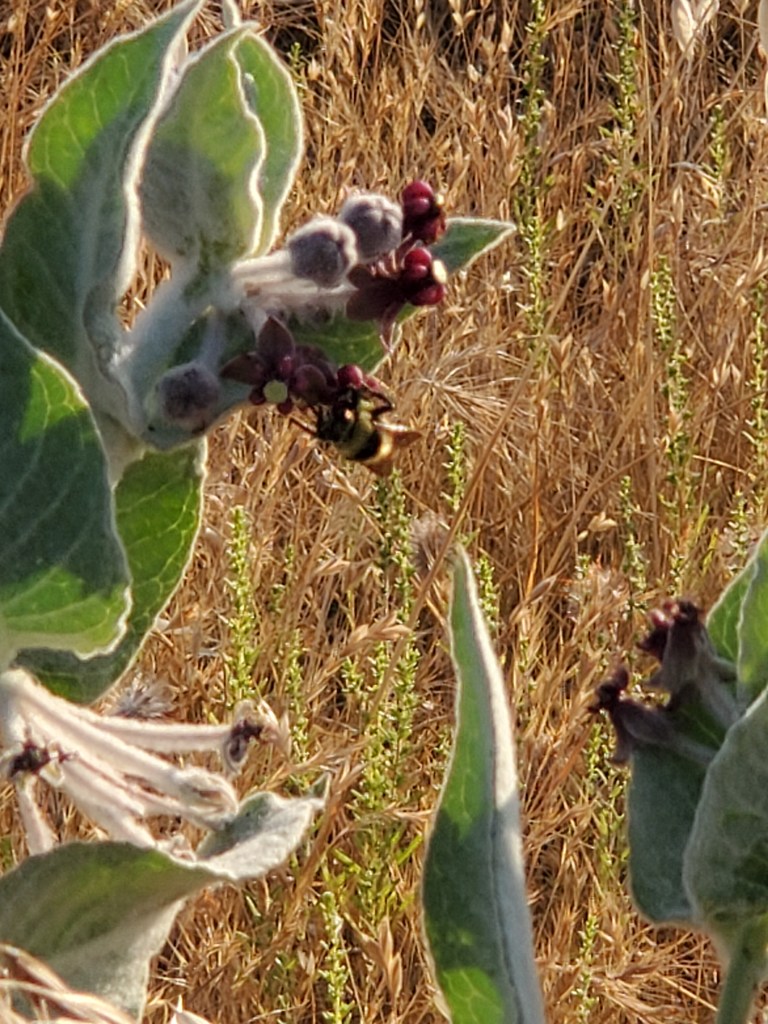


As I have reported in a past blog, bumble bees are in decline. They are ground nesters and susceptible to disturbances in soil movement. Pesticides and herbicides also account for their decline. Something else I noticed, when the sage was in full bloom, and attracting all types of pollinators, the European honey bees seemed to gang up on the less numerous bumbles and push them away. While they found another flower to harvest from, it made me wonder if all the bee boxes everywhere aren’t causing some problems. My neighbor two parcels south always has a person drop over 30 hives each year for several months. I love honey, and honeybees, but as with anything, scale is critical to consider as we think about policy and our own choices about how we steward land. I have a rogue honeybee hive in a nearby creek too that I love to visit. There is something marvelous about a group of animals that escape their human serving bonds in an effort to become wild, and live on their own terms. It is about living in balance; we all need one another to thrive. It is a partnership, a relationship that is multi-directional, not ones’ needs more than another. We must respect one another to make things work for all of us. Again, it is all about scale.
Not only are the bumbles using the blooms, I’ve seen more tarantula hawks than ever flying around, enjoying milkweed (and other) blooms.
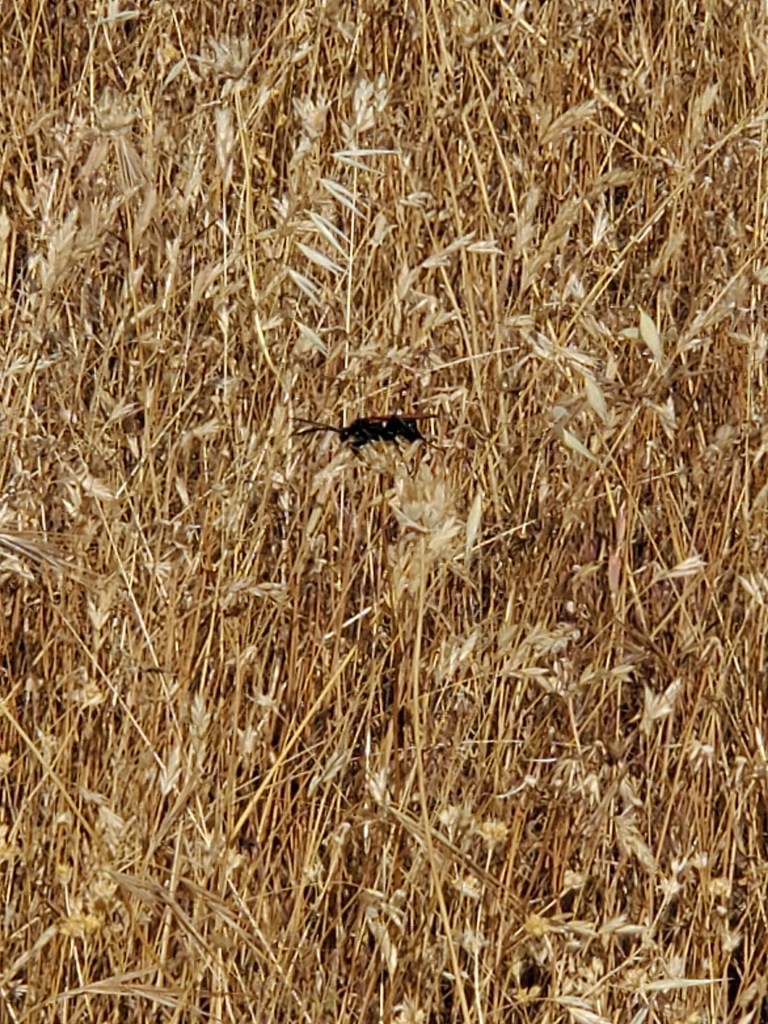
The tarantula hawks are big, with a long nose, deep black coloration, a large abdomen with stinger and small (as compared to their body size) orange wings. As I was walking the ranch, they seemed to be everywhere I went. When they fly close to you, you pay close attention. They are not aggressive, but can sting humans if provoked. I have heard from others around here that their sting is extremely painful. I pay them much respect. Their name holds a grim tale for one of my favorite creatures on the ranch, the tarantula. If you want to learn more, this Natural History Museum site seems a credible source.
Bad News: Grasshoppers



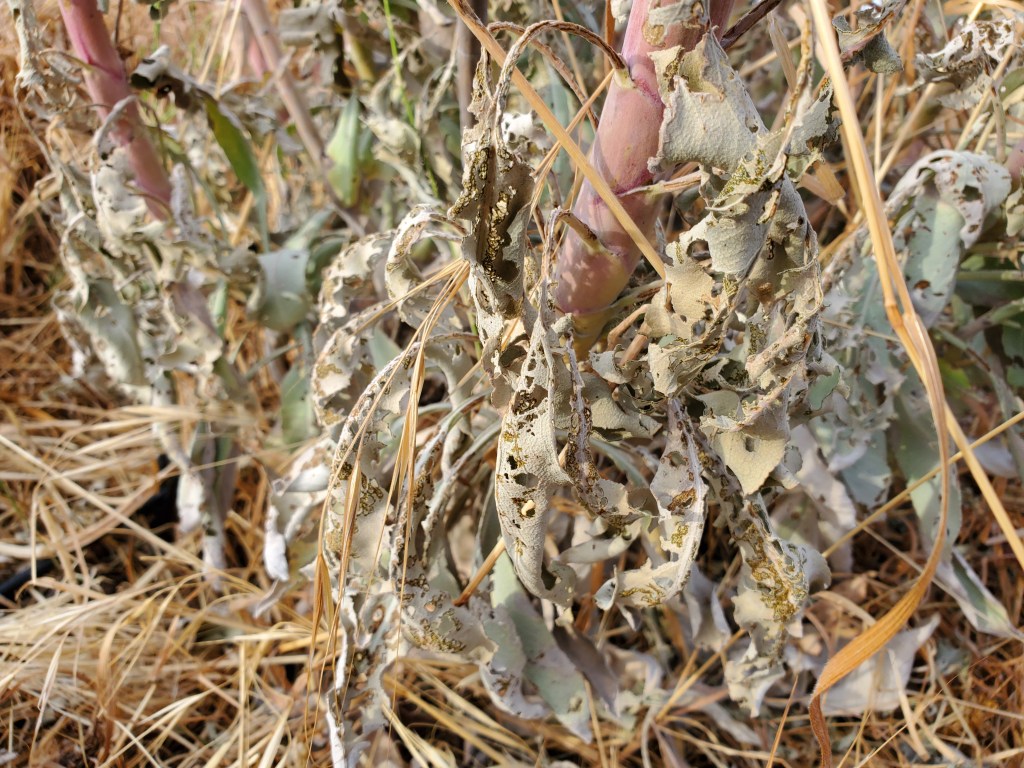
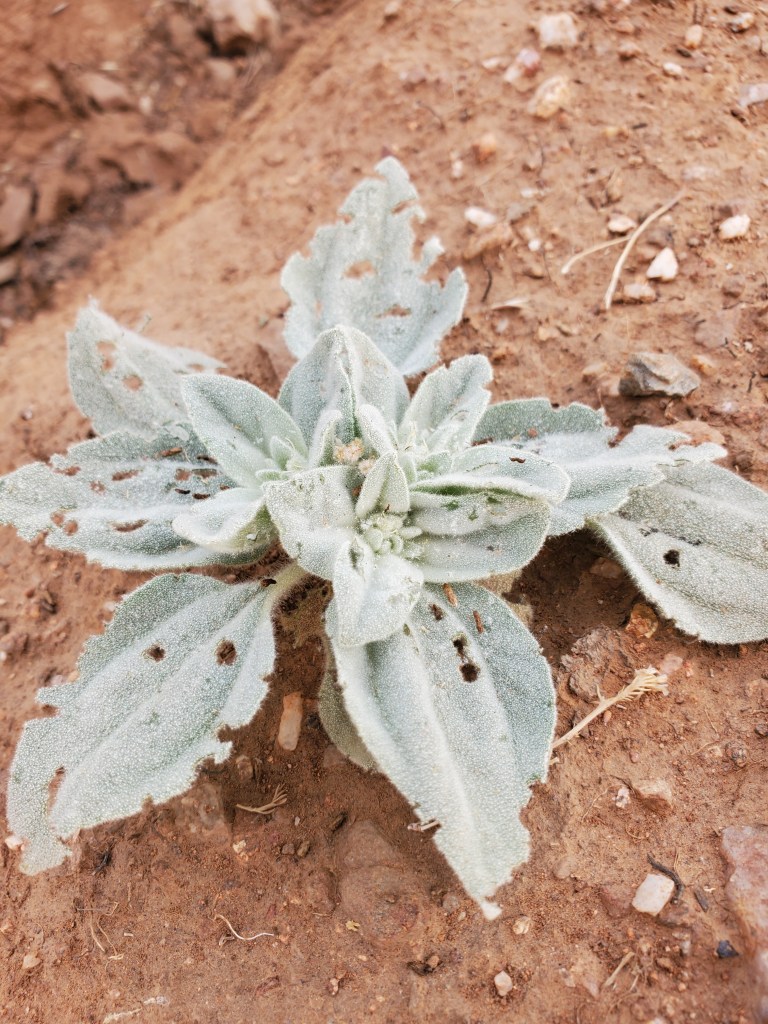
It is a horrendous year for grasshoppers. They are not yet fully grown and have caused significant, heartbreaking destruction. Sixty percent of the Xerces plants I painstakingly planted have been eaten. Some are making a come-back, but they will not stand a chance. All I can hope for is that their roots were strong enough to return next year. Fortunately, some of the early blooming nectar plants already grew, bloomed and seeded. So far, all the new Xerces milkweed has remained untouched. I don’t hold out hope that they will be spared. The hoppers ate the Ca Milkweed down to sticks the year before last.
The hoppers are also shredding my existing, mature plants. They murdered three of the four big leaf maples last year. Only one emerged with leaves, and sadly, will likely be finished off this year. The sages that are further from the house have been mangled as was the buddleia. The further from the house, the more decimation there is. They are plague level. While there are natural predators all around, there are not enough to keep them in control. A friend at the Tribe told me that their ancestors used to use fire to round them up and eat them. I am thinking about starting a grasshopper farming operation. Insect food is the trend for the future!
I began collecting seed pods from several of the plants so that the hoppers did not eat them before they could spread. You can see in some of the photos below, the hoppers are already taking a bite into the seed pods. Fortunately, the pods are the last of the plant they will eat, which gives them time to mature and me time to collect them. The Ca Milkweed is critical.


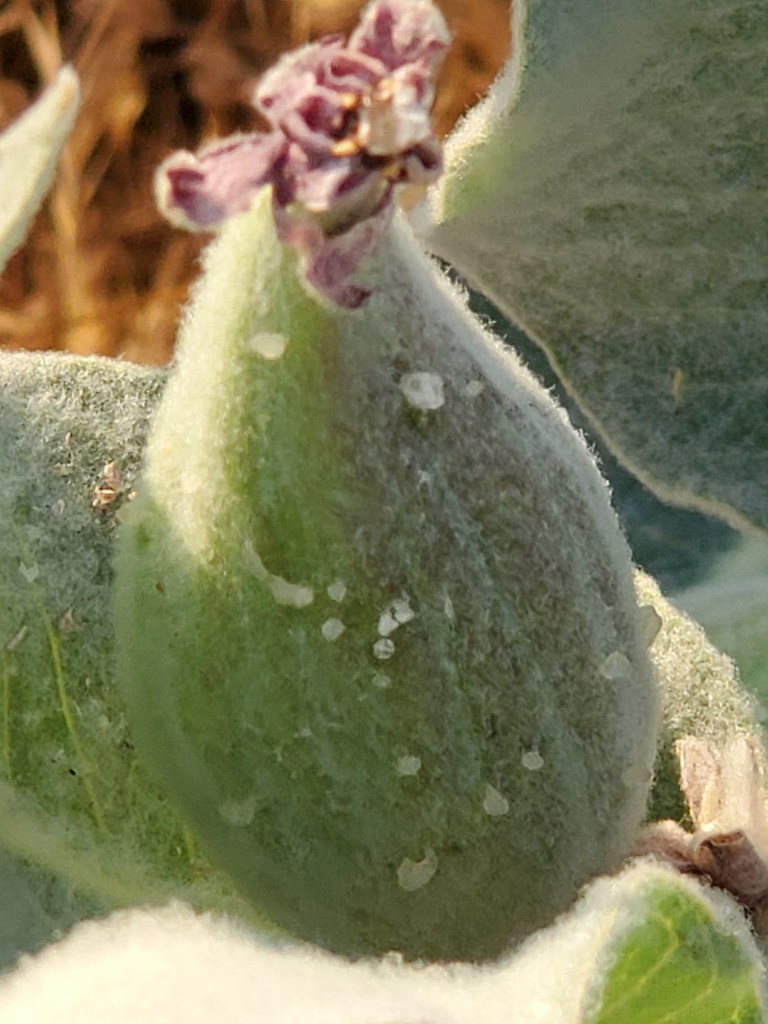

Good News: Milkweed Spreading
Another “bright side” is that many of the older milkweeds are beginning to spread. It has taken four years, but they are established. For Xerces and Ca Wildlife Board (via Mariposa County Resource Conservation District), funders of my increased scale for planting, this is a great return on investment. I know I will have nectar plants with the prescribed grazing and riparian exclusion during blooming times, but previously, milkweed was much rarer on the ranch. Now, through these investments, milkweed is established in greater numbers and places on this rangeland…and they are doing it without supplemental water. This is a huge win for pollinators, since rare bumblebees seem to love the flowers as well as monarchs.
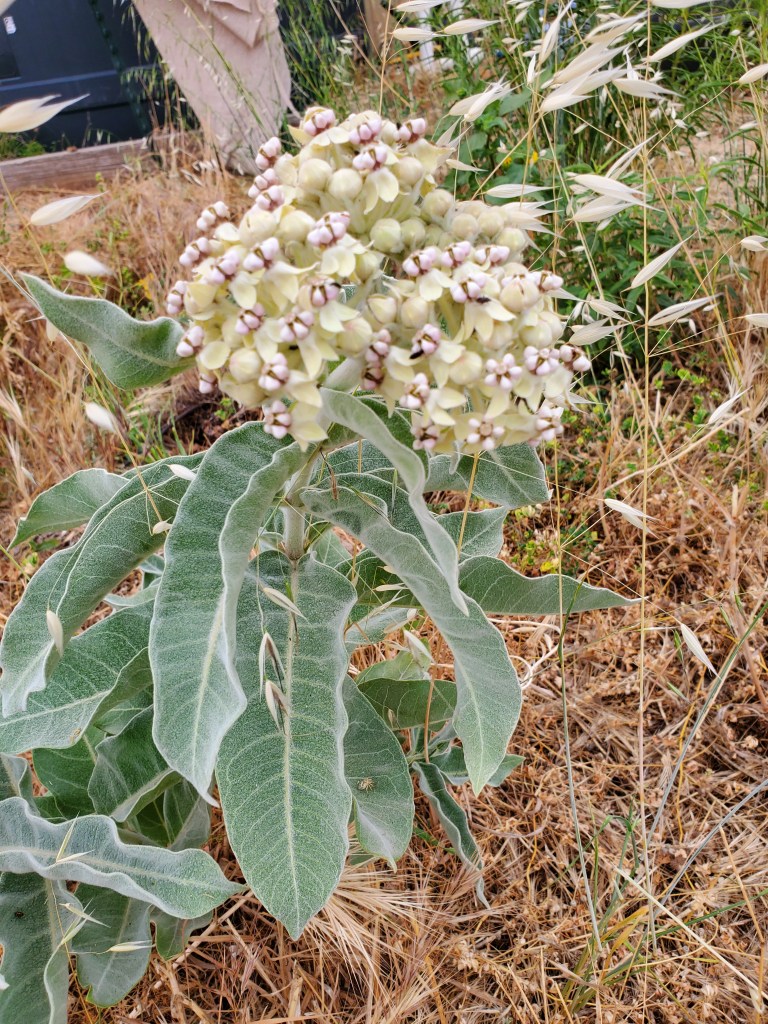
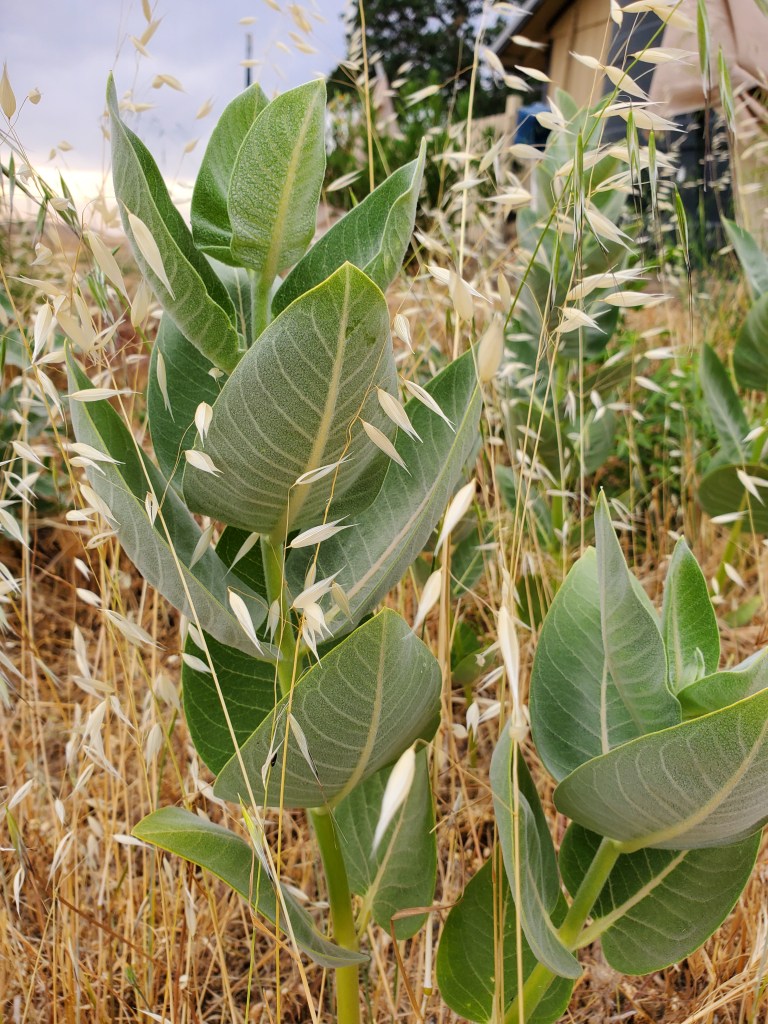

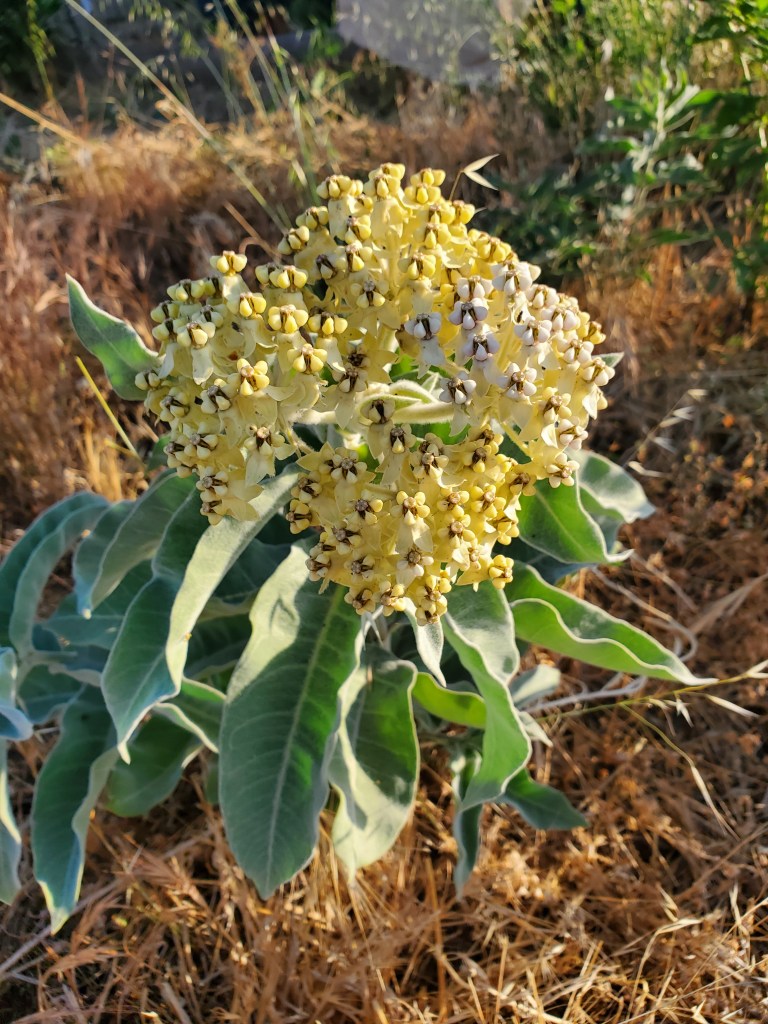

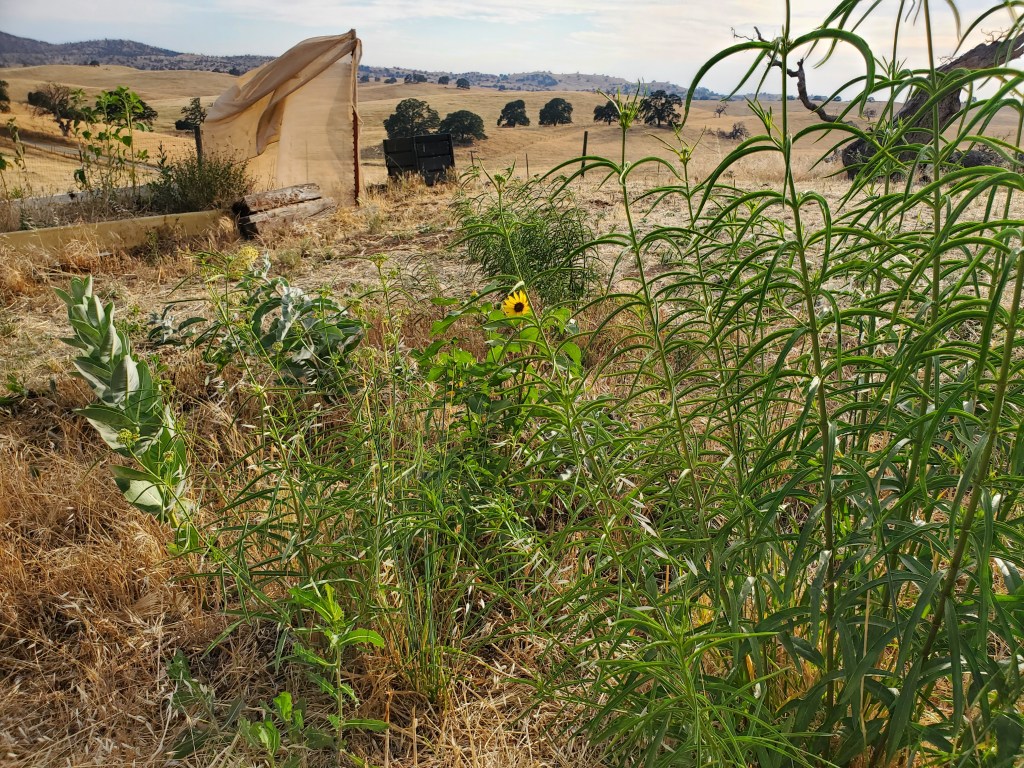
Maintaining Habitat
Most of the work I do is not as exciting as planting new, healthy plants. It is straightening gopher baskets, re-piling rocks, checking water, fixing fence, cutting grass and limiting or removing invasives – among many other things. The cool weather has given me the opportunity to work longer and more hours into the season to get things done. Recently, I checked the wildlife guzzler. It is still filled with water, though it has decreased a bit. There is evidence of birds using it. The cows knocked down the panels, and the calves can get in, so the rock and branch ramp to the guzzler was disturbed. I re-piled the stones and branches so that smaller creatures have access the guzzler. I also cleaned out some leaf material from the water.

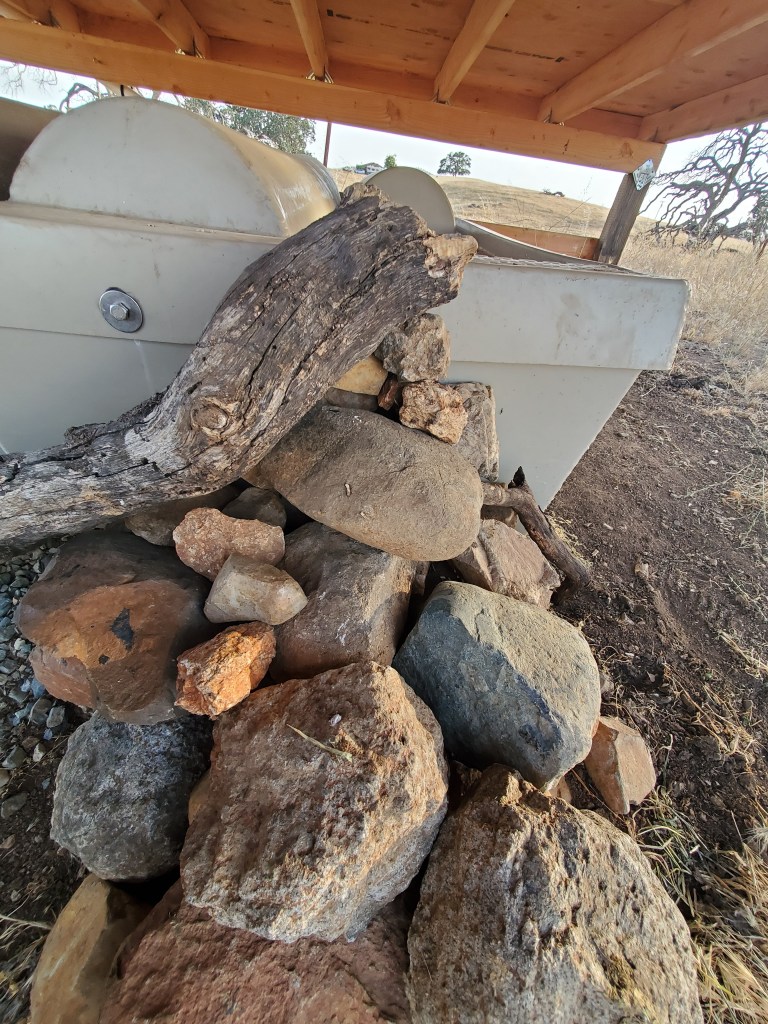
Another not real sexy task is removing seed heads and flowers from the thistle. With the rains, it has really taken off this year. I have had to travel away from the ranch several times this spring, which has meant that the thistle has already bloomed, and some are already gone to seed. Dressed in my canvas overalls and rose gloves, I took out probably 300 heads from the creek out of a million. It is important to use a thick plastic bag that seals. Thistle is so sharp, it can slice through a regular plastic bag and release the seeds you worked so hard to prevent from spreading. For this effort, I used an empty dog food bag with a Velcro closure. It worked great. While I was cutting off bloom and seed heads, I saw a bumble using the thistle blooms. It made me feel slightly better for being so derelict in my responsibilities. At least in those areas, there will be a few thousand less chances for spread.

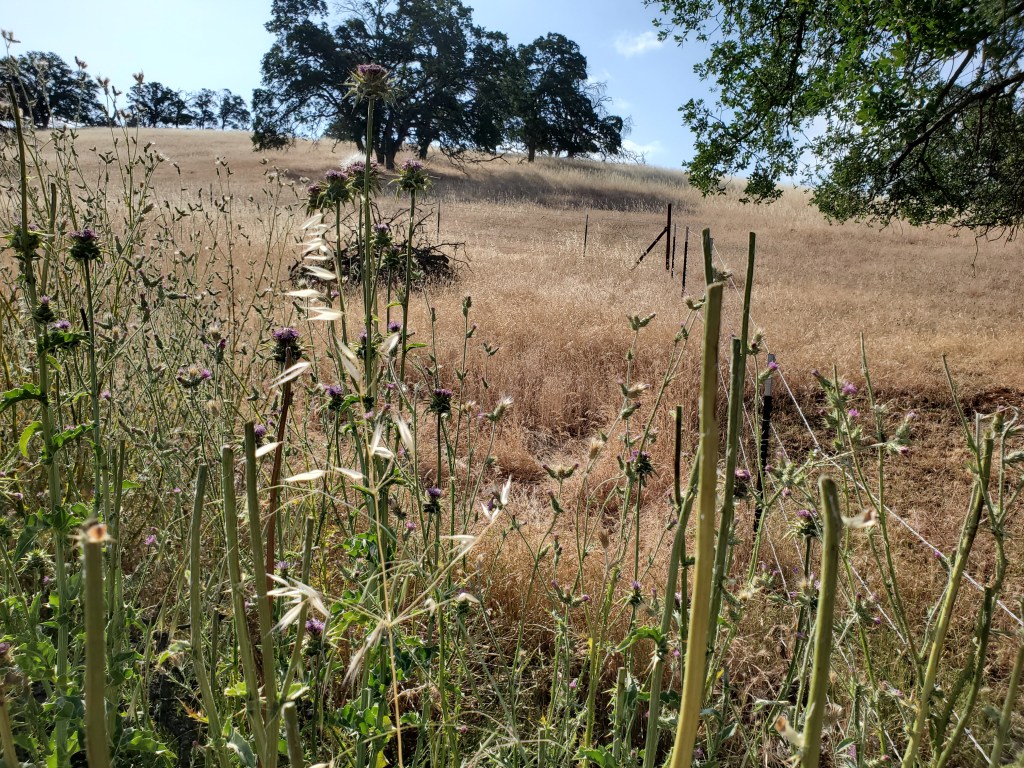

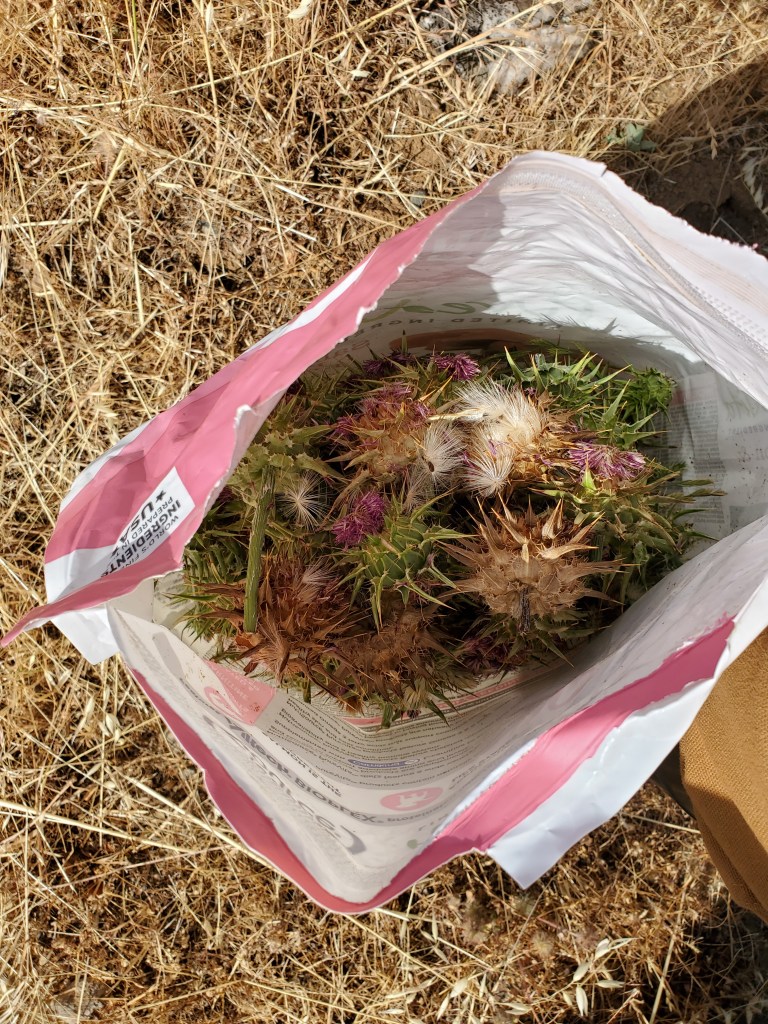
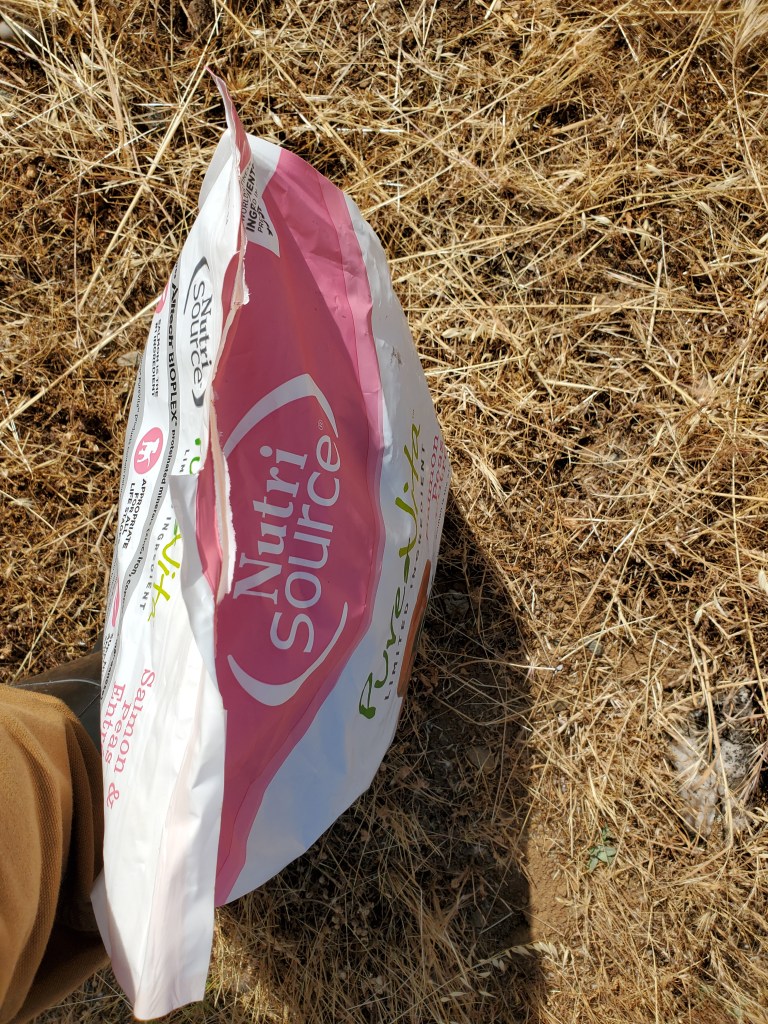
Befriending a Toad
There have had been many frogs and toads around the ranch. While I have not seen many of the small tree frogs (that used to hang out on the doors and windows) in the last 15 years, I have seen several toads near the house each year (maybe that is why I don’t see the small frogs). Amphibians are remarkable animals. They live in and out of water and eat a significant number of insects per day. I am particularly grateful to the toads. They eat grasshoppers, and I have one lovely lady that is protecting my medicine and tea plant area. Her name is Erma (pronounced Air-d-ma, the Spanish way, but I linger on the “air” part trying to make it sound like a “ribit”.). I think she has been in that same location for several years as she can burrow in the ground to avoid dry conditions for quite some time. The area Erma is occupying is watered regularly with rainwater I collected over the winter. There is also a trough in that section I keep half filled with rain water. I still have two Xerces willows in pots in the trough. Their roots are extensive. The leaf cutter bees seem to love their leaves, so I kept a couple at the house instead of planting them in the creek. Erma loves soaking in the trough. I find her clinging to the willow roots or just on the escape ramp, her eyes and nostrils barely out of the water. She is so beautiful.
In years past, the toads would defecate on the patio. Their poo is quite large and slimy, as you might imagine. I have not seen any poop on the patio for a few years. Erma, it seems, prefers to poo in the water trough. Even though fresh water is added daily, it became a creamy jade green with floaters. Ick, I know. I wasn’t sure if I should clean out the trough, or if she preferred it, um…highly organic. I believe, for my elevation, it is beyond the breeding time. I did not see any tadpoles when the water was less green, so decided to dump the water.
What an effort. I have rocks in the bottom for habitat and to create various depths. No way was I able to lift it, not even David is strong enough, and I did not want to tip it and disturb Erma. That meant I had to use a bucket to bail the water out to a level where it could be lifted. What a messy muck. The water would splash up hitting my face and clothes. Then, I would walk it over to a planted area, bucket full, to release the load. I was thinking that dispersed, these nutrients would be good for the plants and soil. Back and forth, I walked bucket sloshing with the green goop. David sat at the patio table, feet kicked up on another chair, coffee in hand, enjoying the “zen” of my repetitive movement. I don’t mind him watching me work. I enjoy the company. It was a beautiful morning. Finally, I was near the bottom. David put his coffee down and helped me take the trees out, move the rocks and pots away from the site. We lifted the trough to the other end of the patio where I dumped the rest. I rinsed the rocks, escape ramp and roots of the muck. The trough was replaced, and everything put back. With newly rinsed buckets, I began walking back and forth from the south rainwater tank refilling the trough. It was done. All the while, Erma was watching me from her spot under the sage in the dirt. Her throat was pulsing as she stared, which is not something I see her do often. I don’t know if that meant she was happy, anxious or just digesting some bug. No matter, she will have a fresh trough of water for her soaking…and pooing enjoyment.
If you want to learn more, here is an interesting citizen science resource I found that covers amphibians. From this site, there are other credible links to official resources.
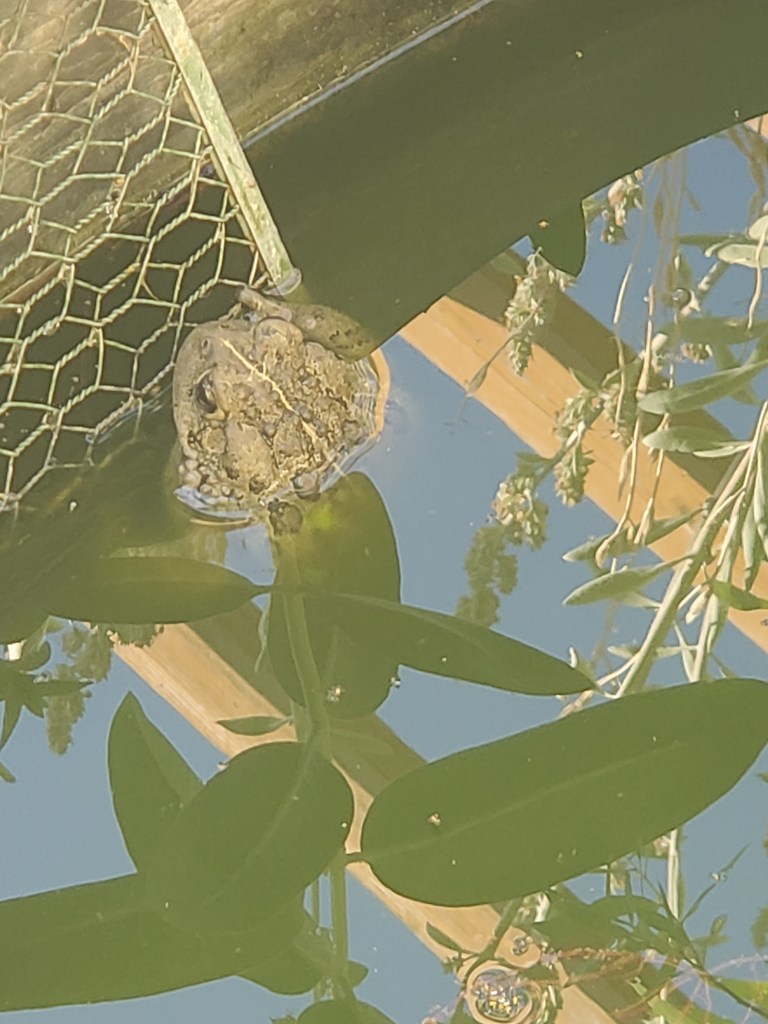
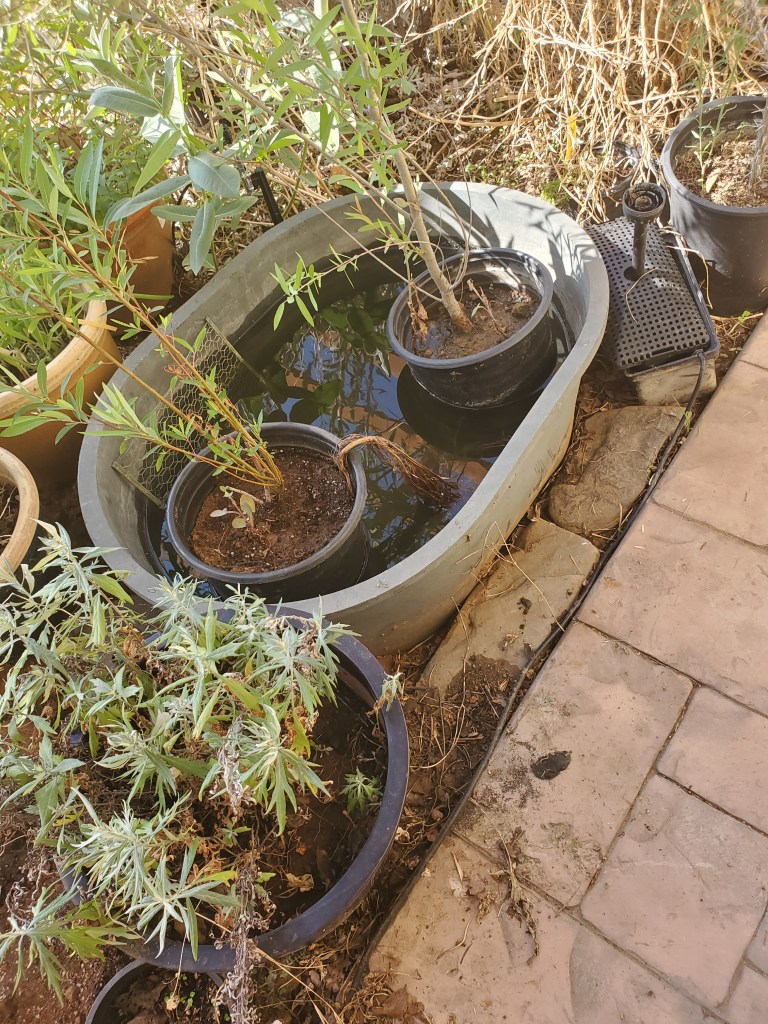
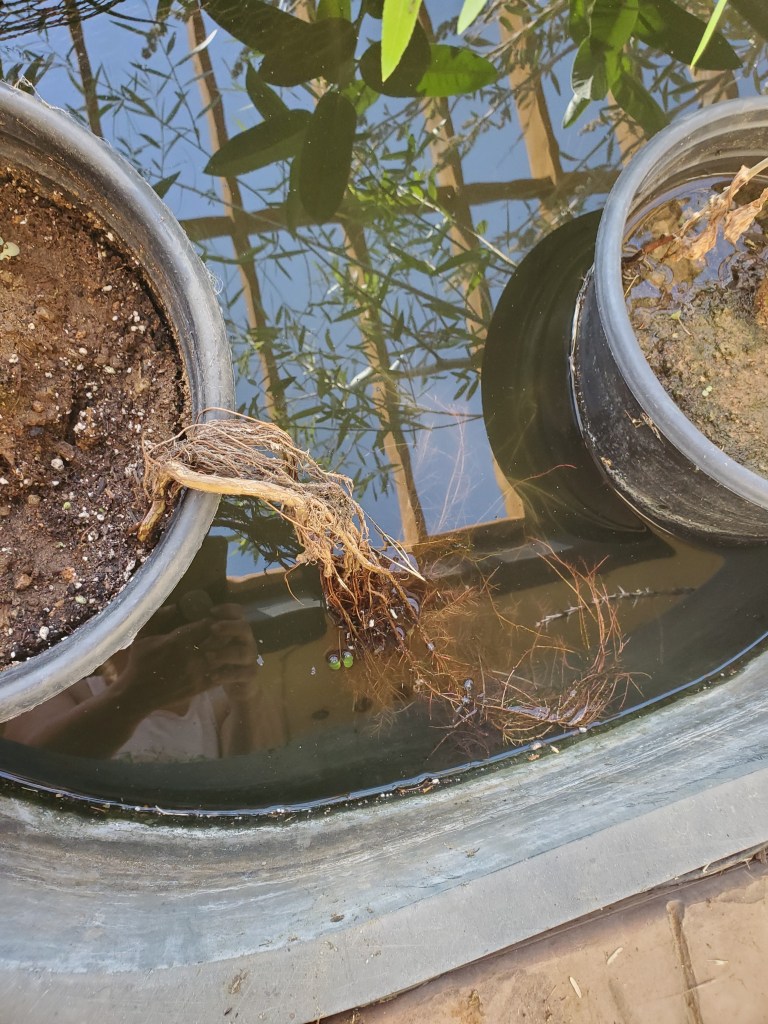
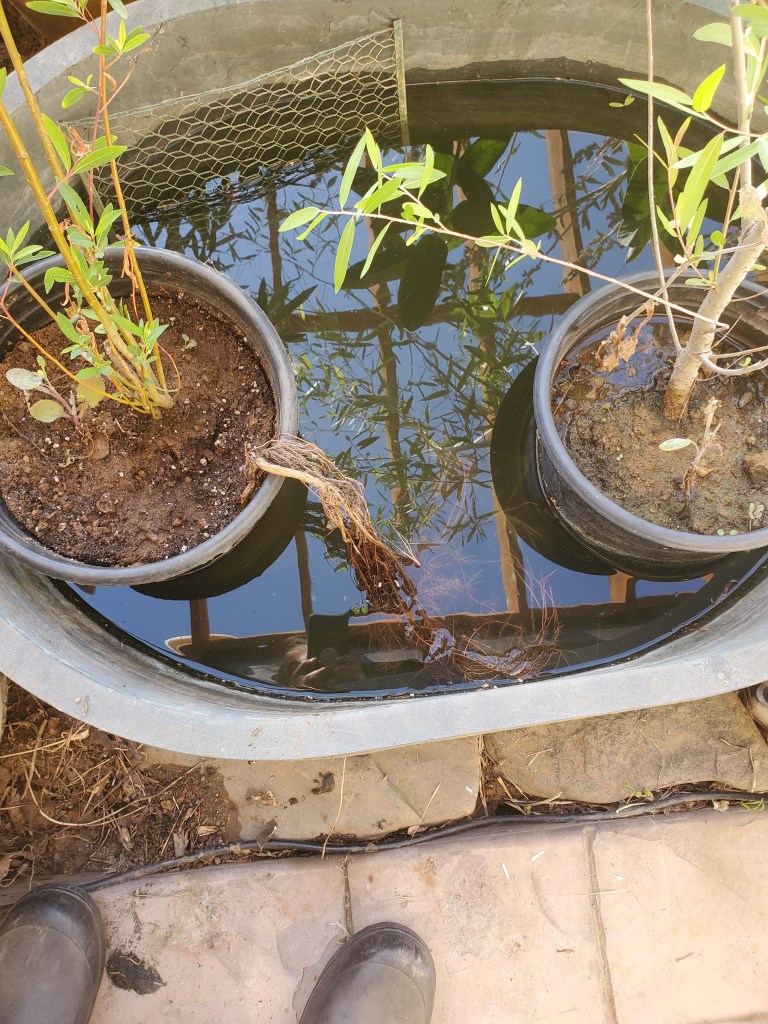
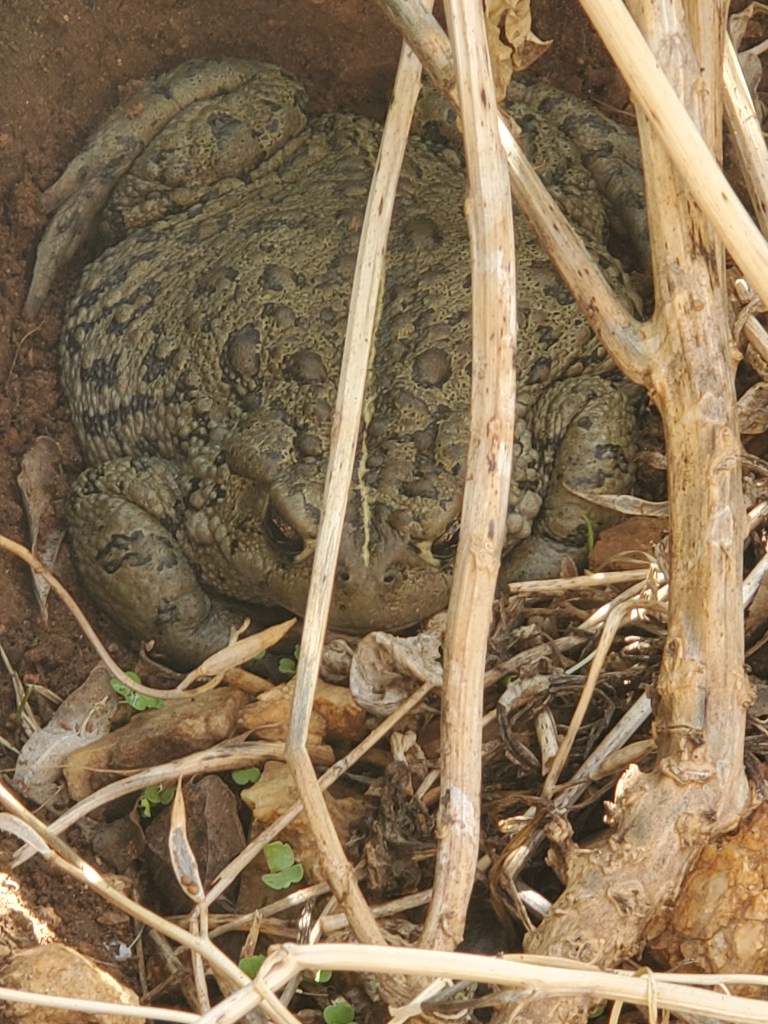
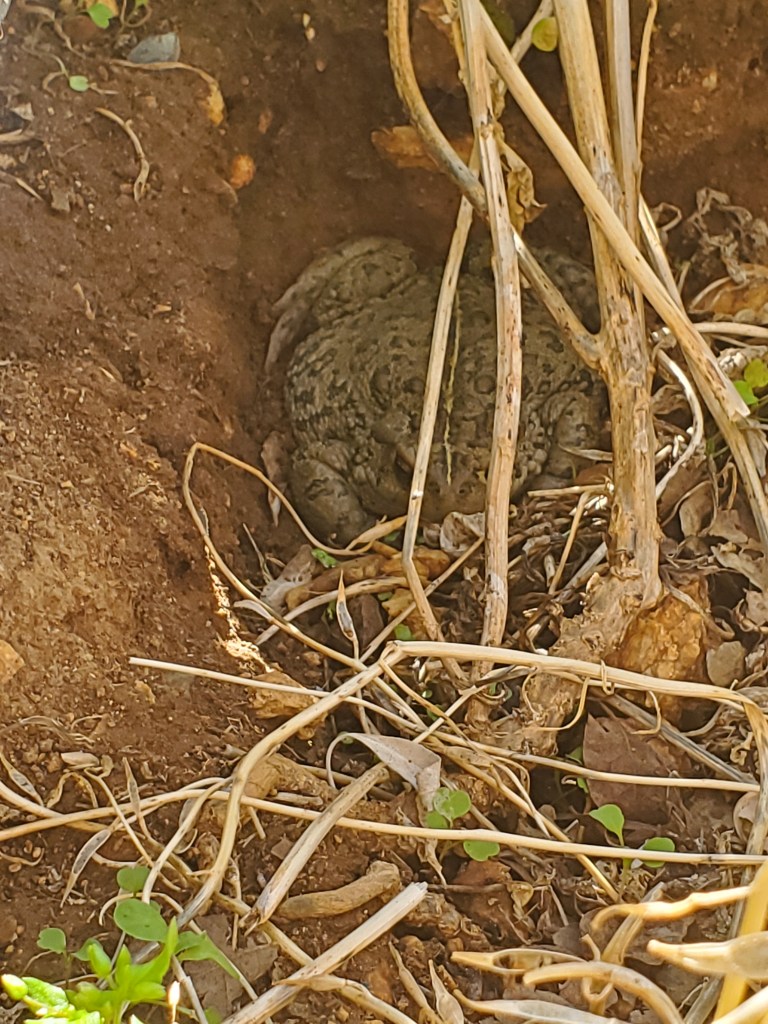
Blooms Continue
One of the keys to high quality habitat is to have plants that bloom throughout the year. Currently in bloom are buckwheat, sage, lavender, showy milkweed, sunflowers, primrose, yarrow, verbena, gum weed, salvia, Mexican sunflower, and I just found one black-eyed susan. In the creek, the yellow flowers are still in bloom – and of course, thistle. On deck is more sunflowers, buddleia (if the hoppers don’t get it first), narrowleaf milkweed and golden rod. These all have unopened buds.

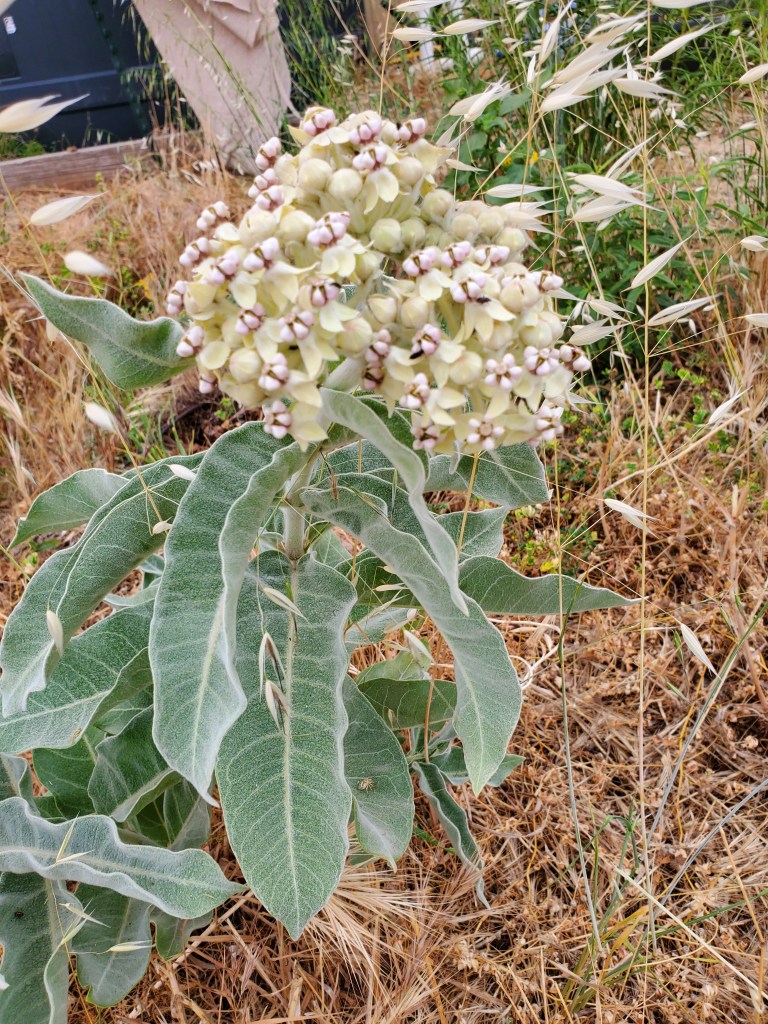
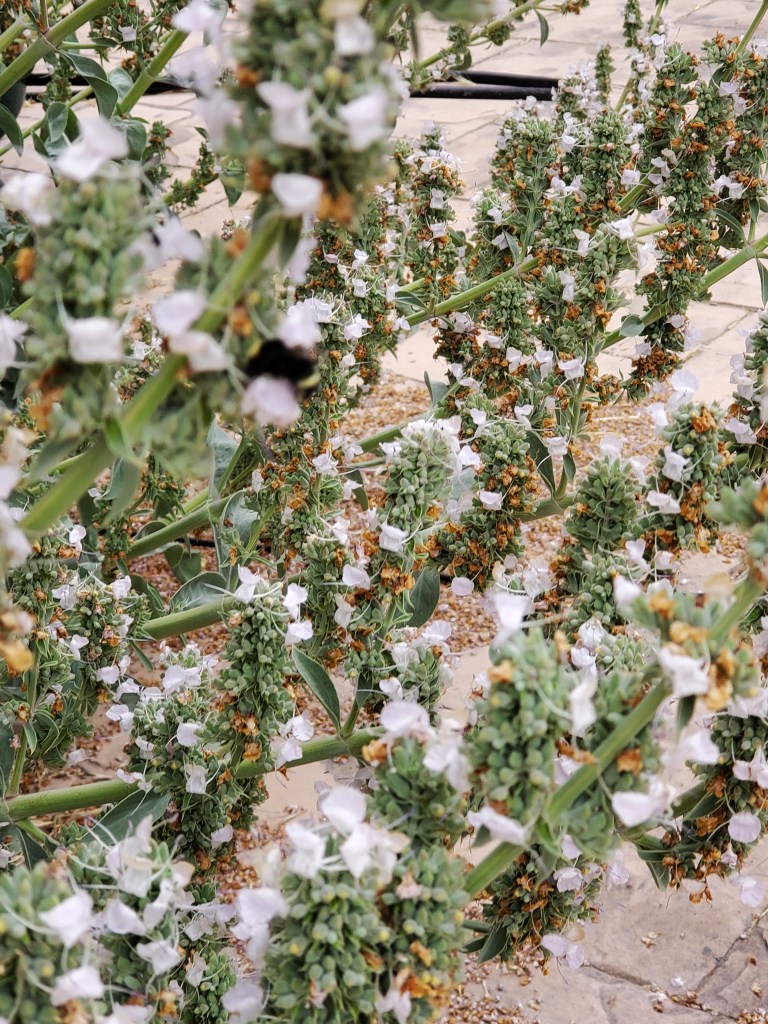
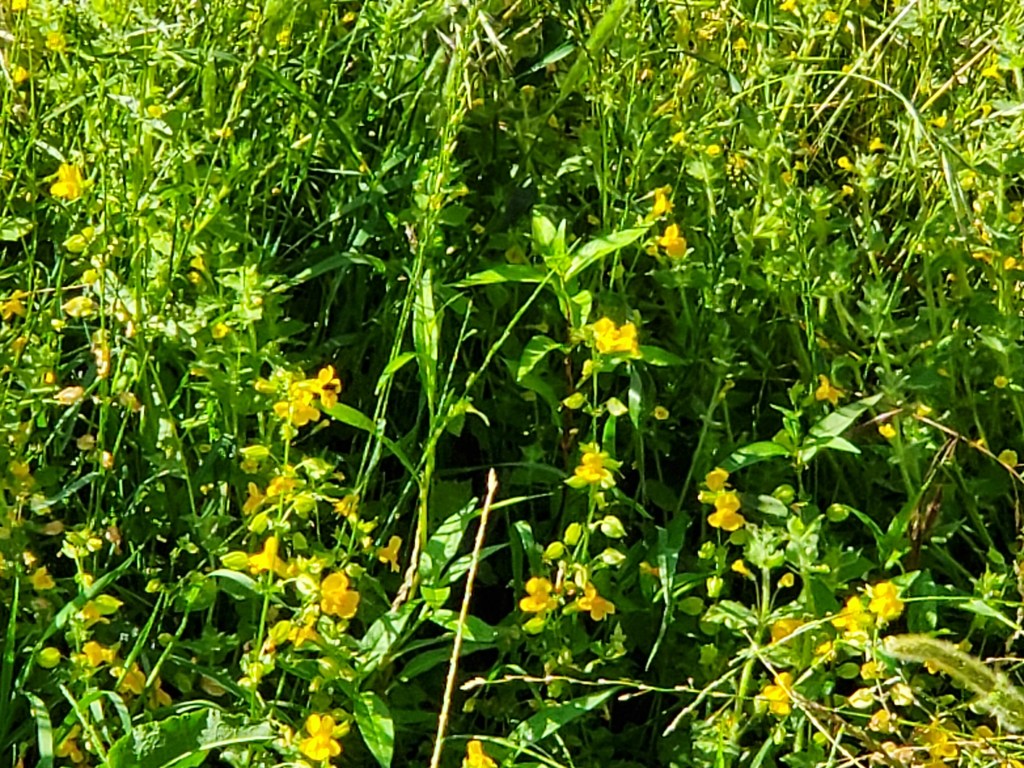

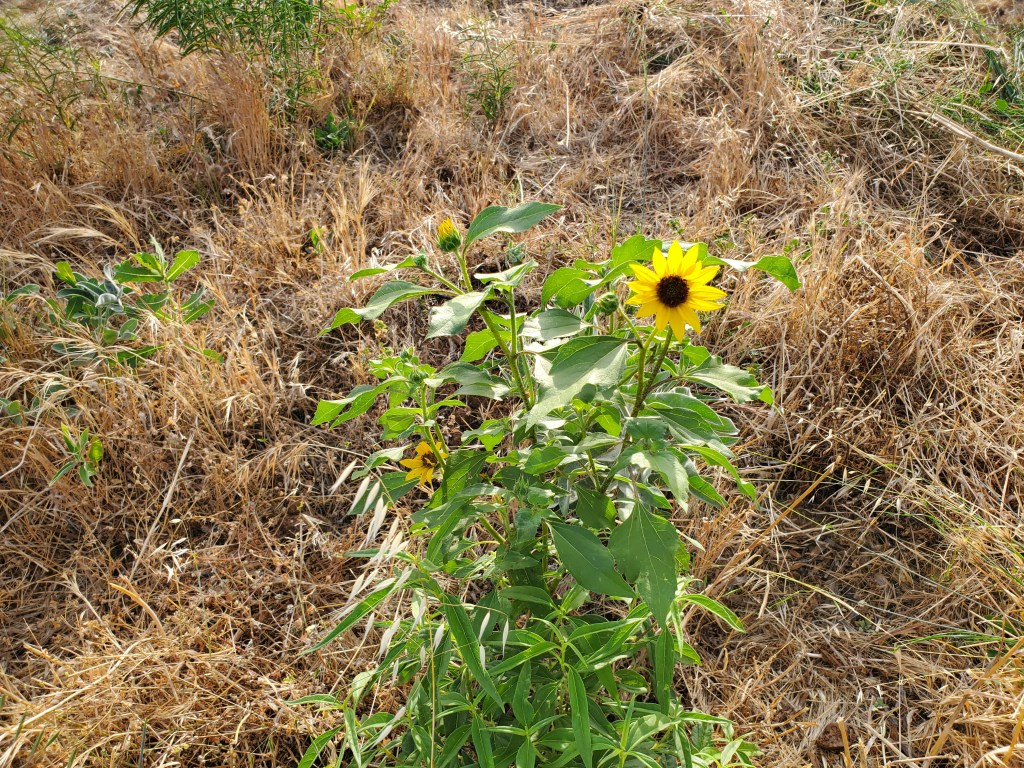
Excluded Riparian Areas Doing Well
The Odom Creek riparian area excluded from grazing this year is continuing to do great. The black oak and cotton wood seedlings that showed up last year are thriving. There is plenty of yellow flowers in the Spring Creek. Both are still running, but Odom is big and still cold from snow melt. Walking near it you feel the temperature change. You also feel humidity from the evaporation. David found small frogs hopping in the creek and burrowed in the dirt. A young redtail reprimanded us for entering her domain. The mass of rushing water really changed things on the creek. It opened up some of the more narrow upstream passages. I don’t see the massive narrowleaf milkweed, or any of the other milkweed I found last year. The water may have rushed the roots away. There is a massive pile of sand and rock deposited from the storms. Maybe something new and good was brought downstream. I did see many datura and found some vinigarweed beginning to grow (Love that stuff!). Generally, all of the oaks have never looked better. Their leaves are full and deep green. The blue oak seedlings in the exclosures are continuing to do well. Gads, they grow so slow though!
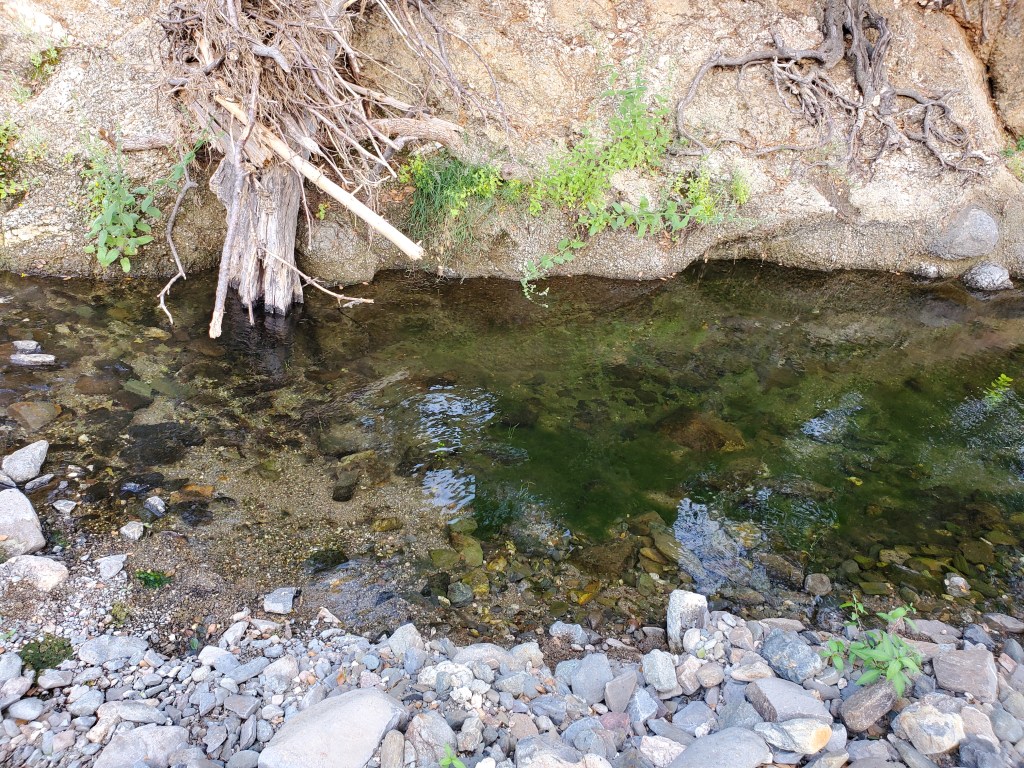
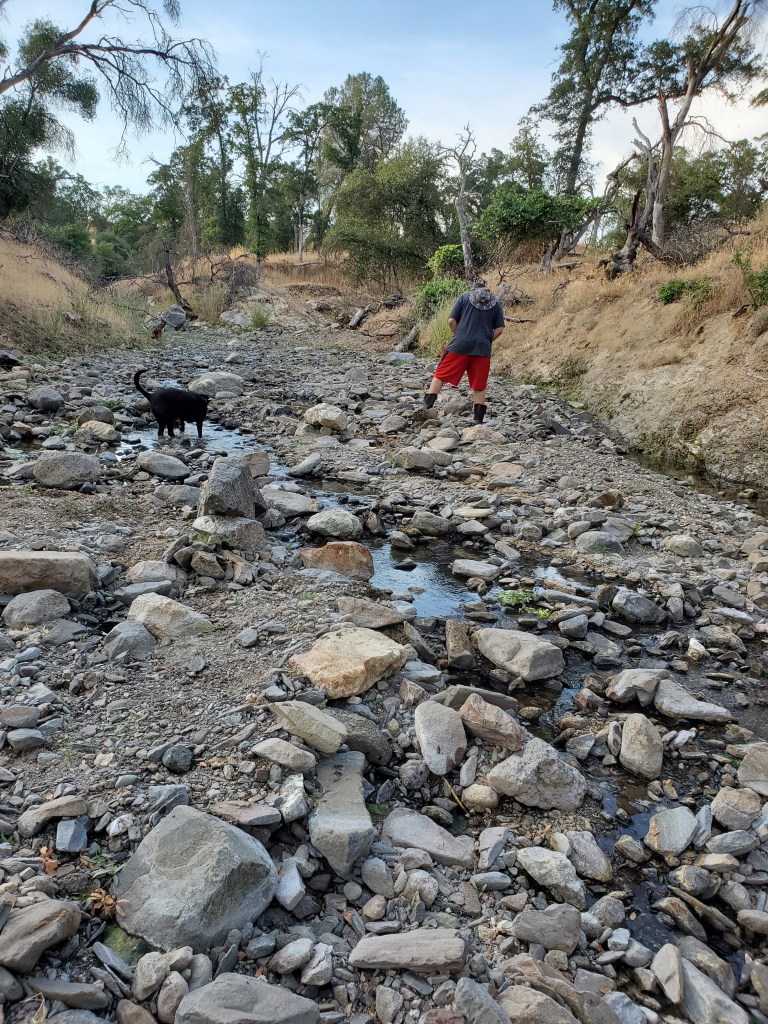
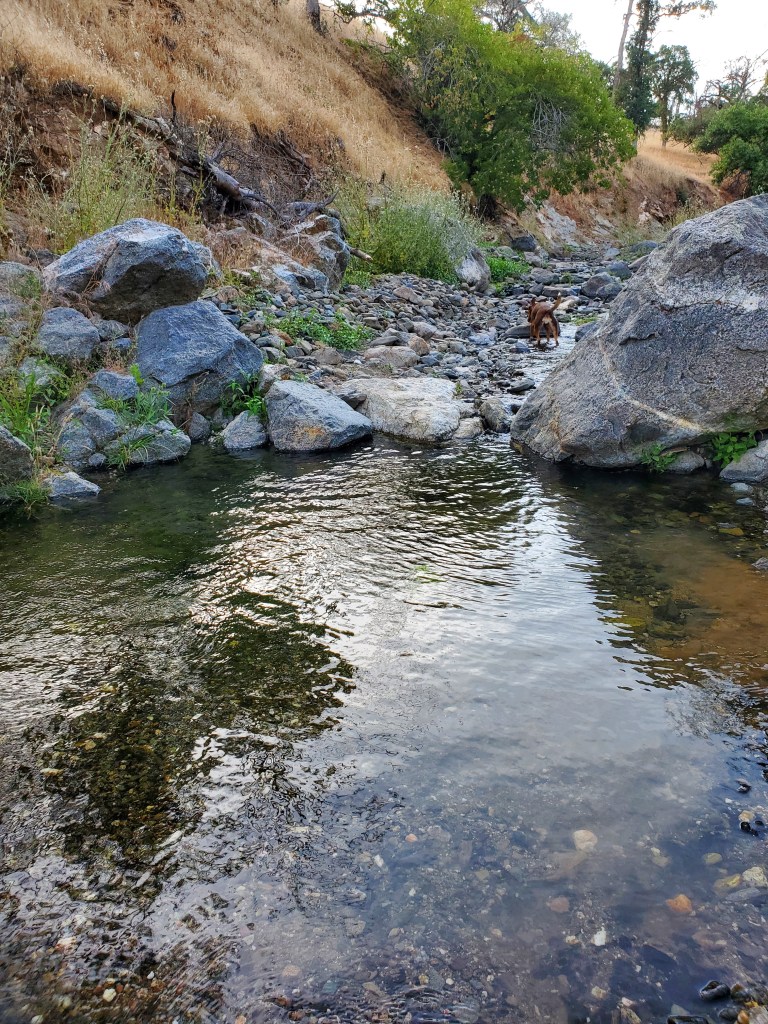
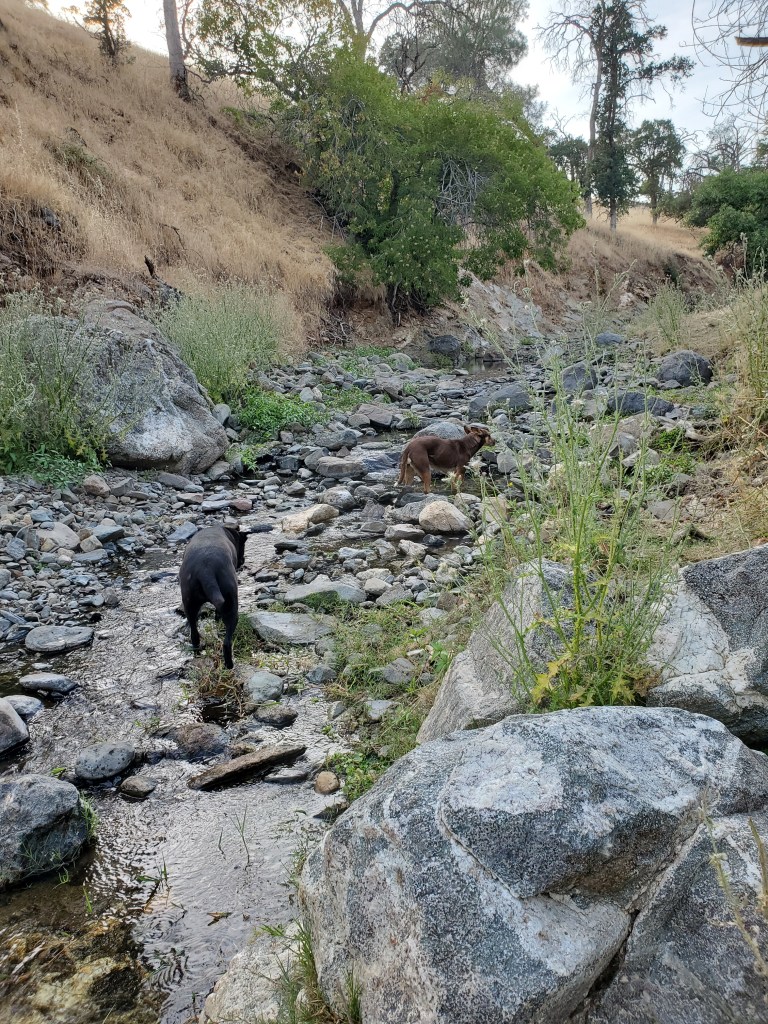
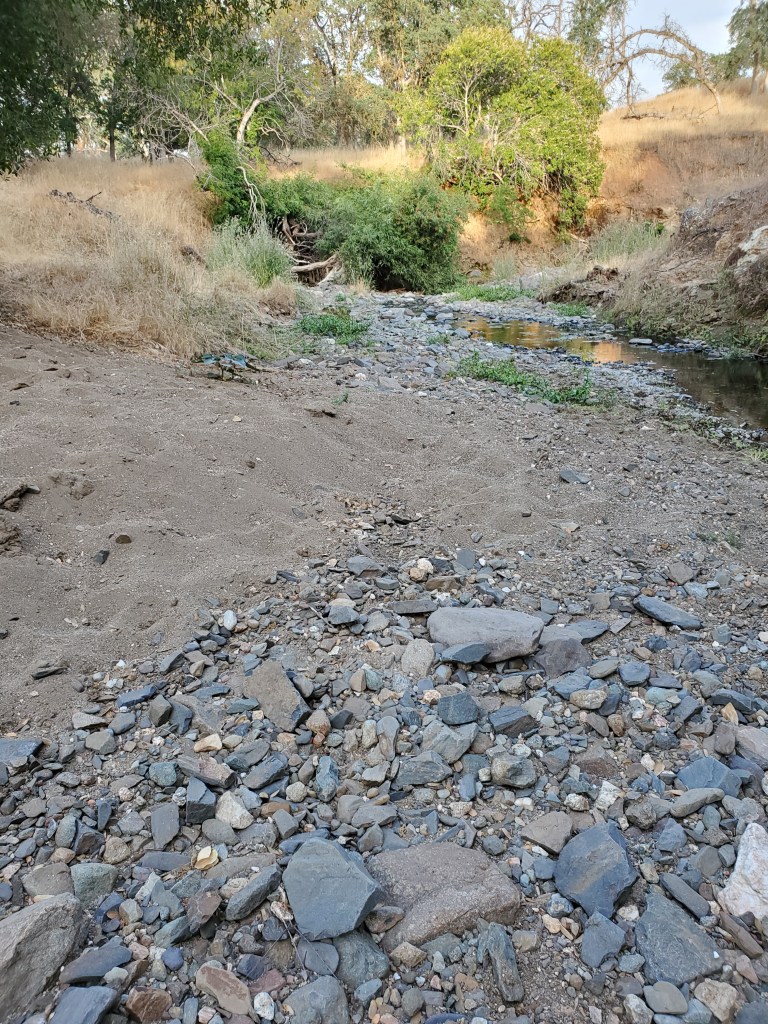
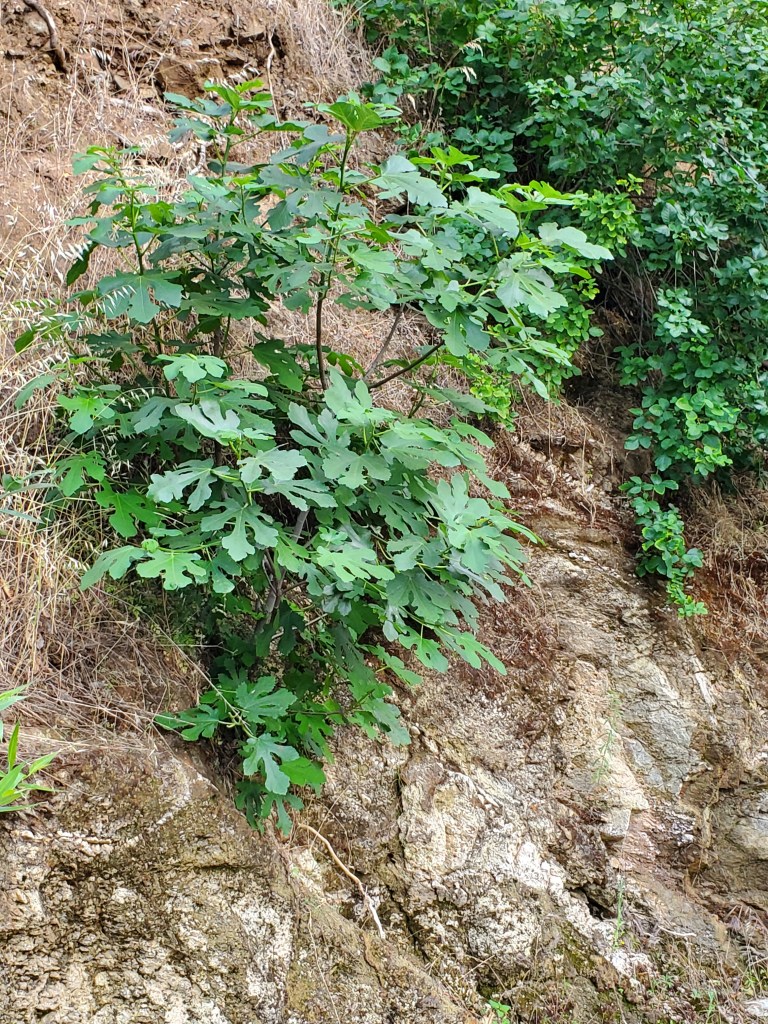
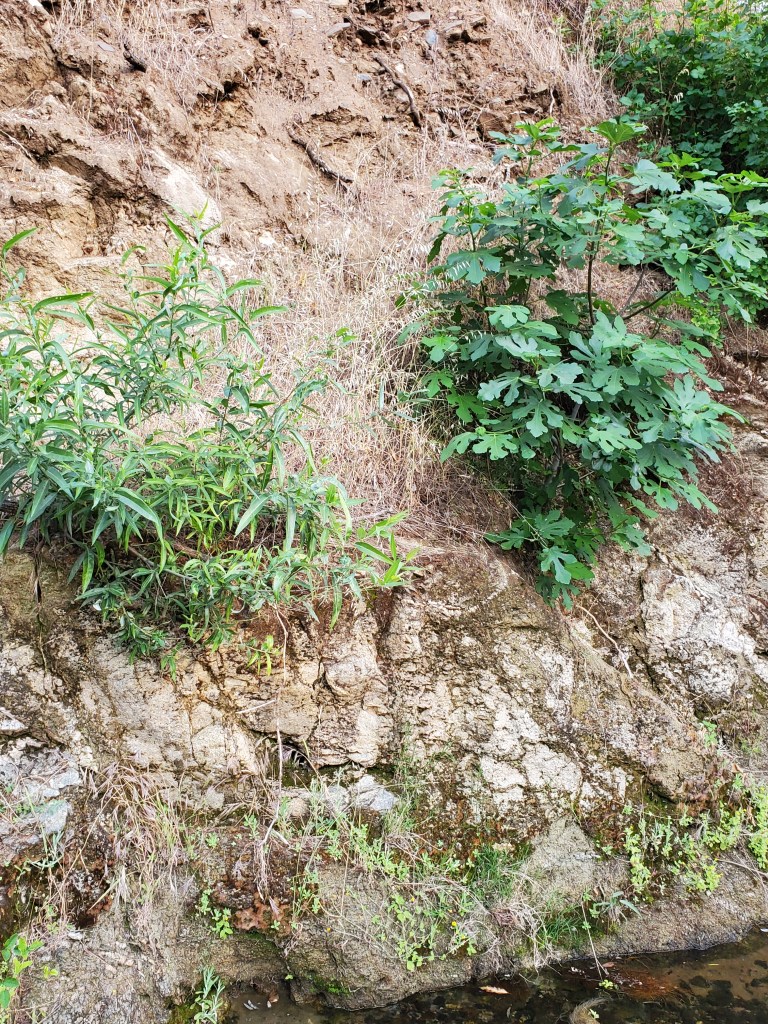

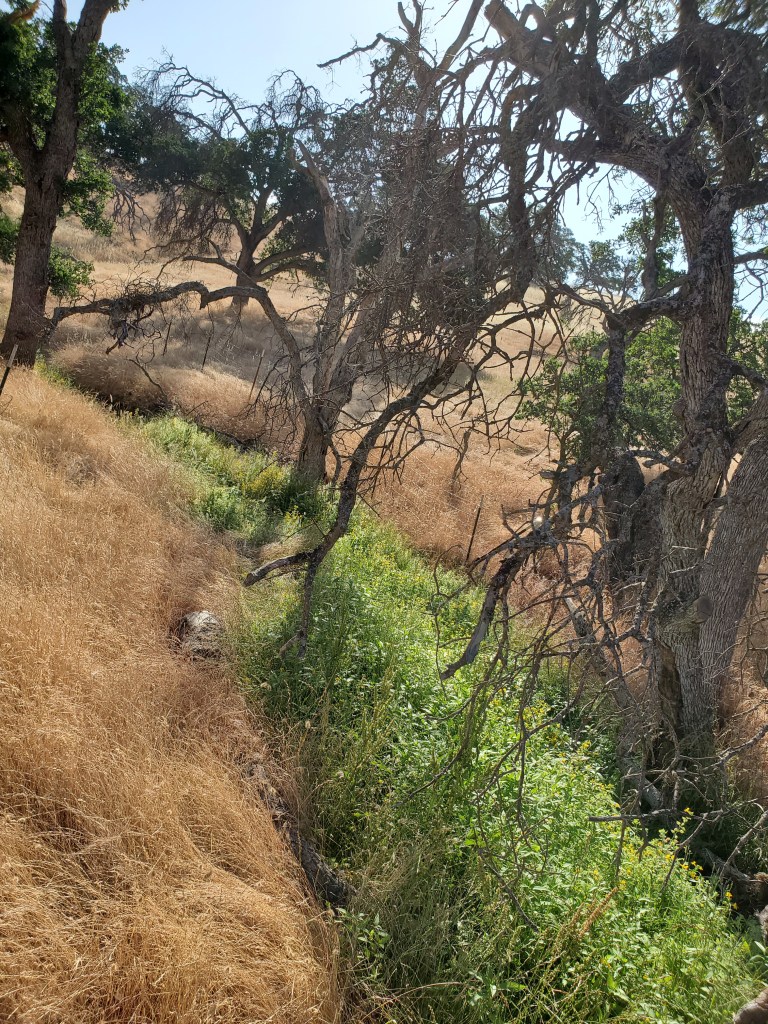
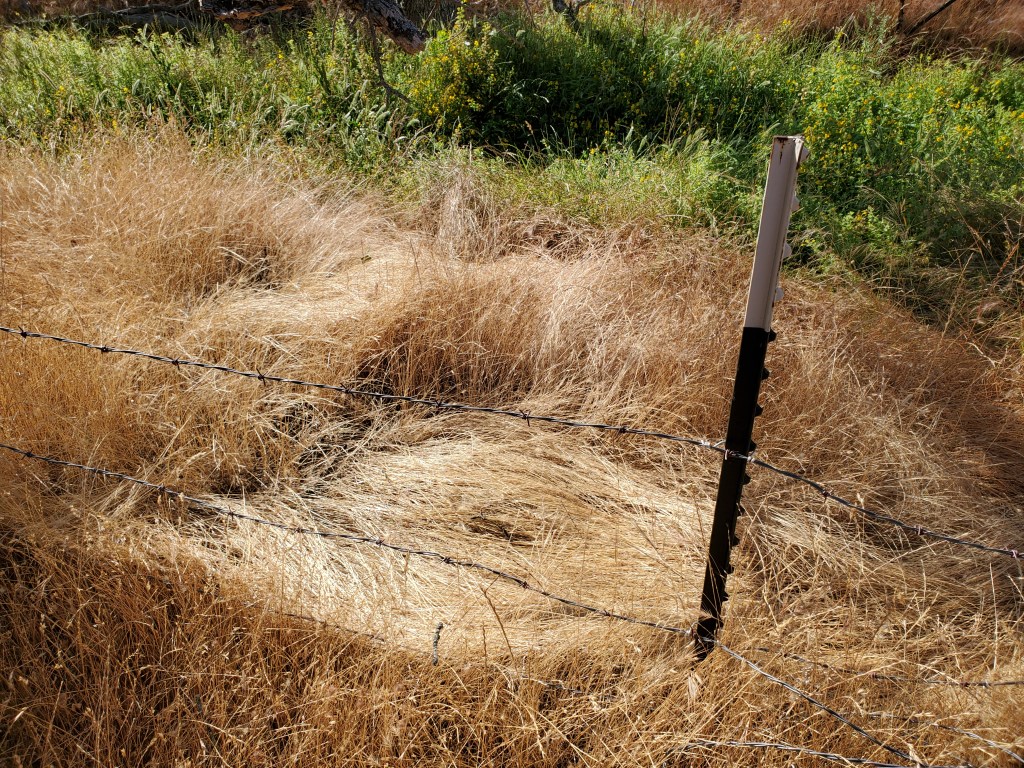
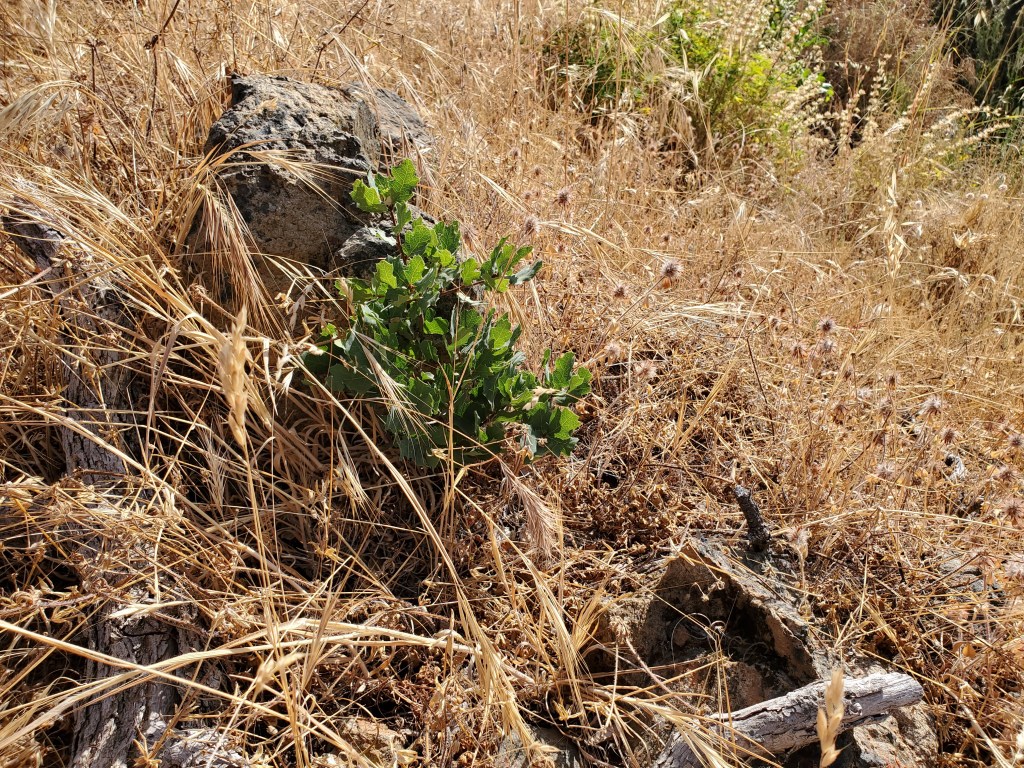
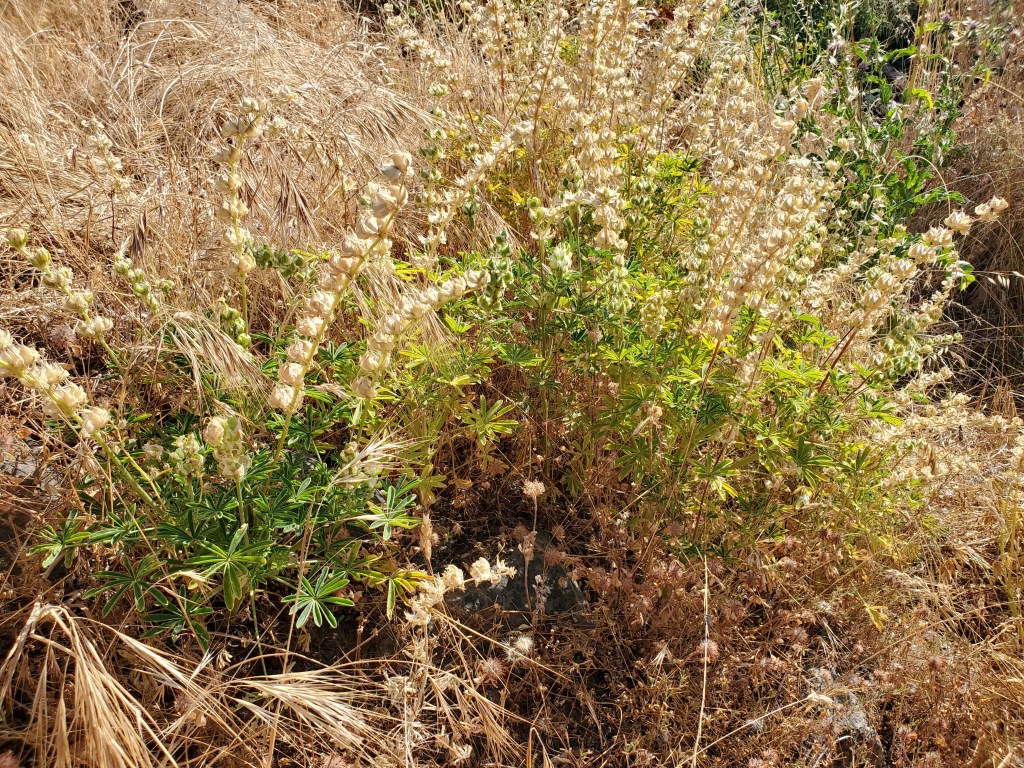
Unusual Visitor
When David and I arrived back home the other day and let the dogs out, a little piglet emerged from the north water tank area. I think she saw our chubby lab Beatrix and thought it was its mom. We were in shock. This has never happened in the 21 years we’ve been here. Immediately, we began looking around for mama pig. Wild pigs are extremely large and intelligent. The last thing we wanted to do was get in between a mom and her baby. David, being the sweet giant he is, immediately went into the house, cut up an apple and tried to give it to the baby. It charged him, and he gave up. I said, “Let’s just leave it alone. Mom is either watching us right now, or she left it because there is something wrong with it.” I thought about what I might do if it was orphaned, and decided I would let nature take its course. They are non-native after all. We went into the house. When we came back out 15 minutes later, it was gone.
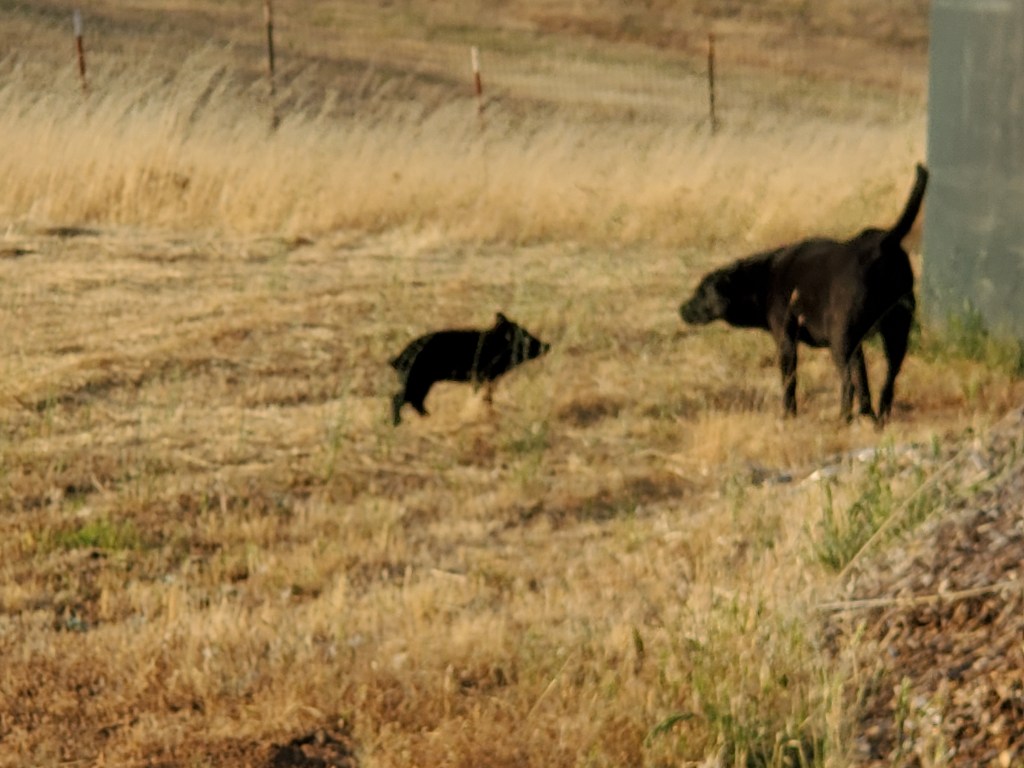
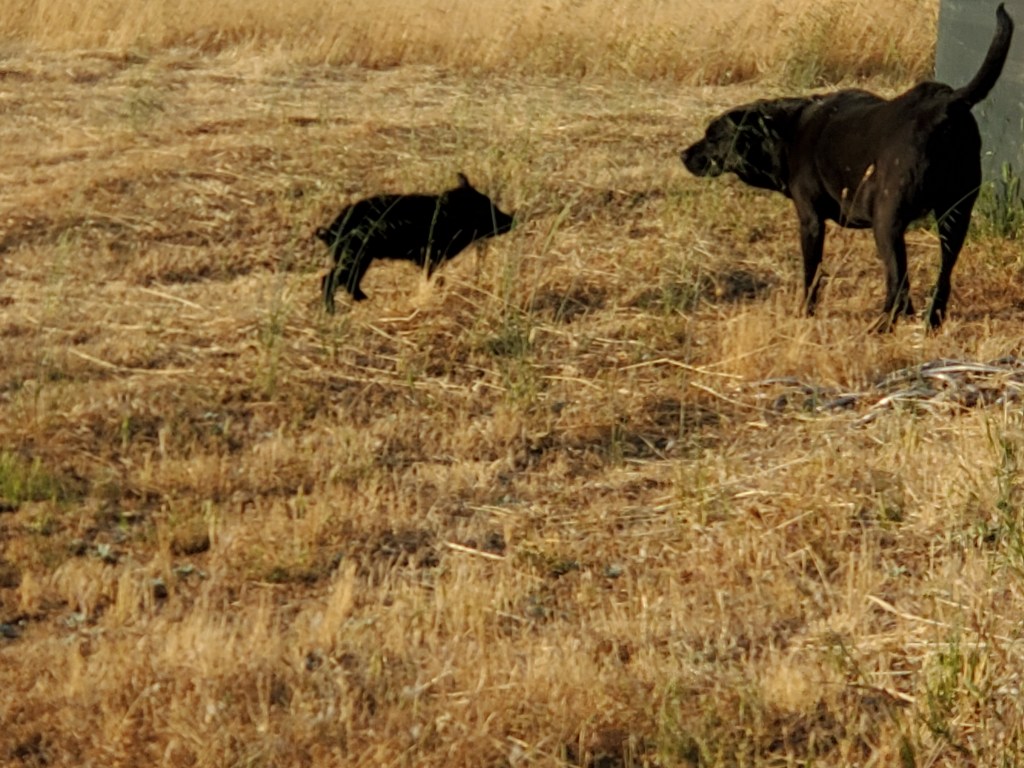
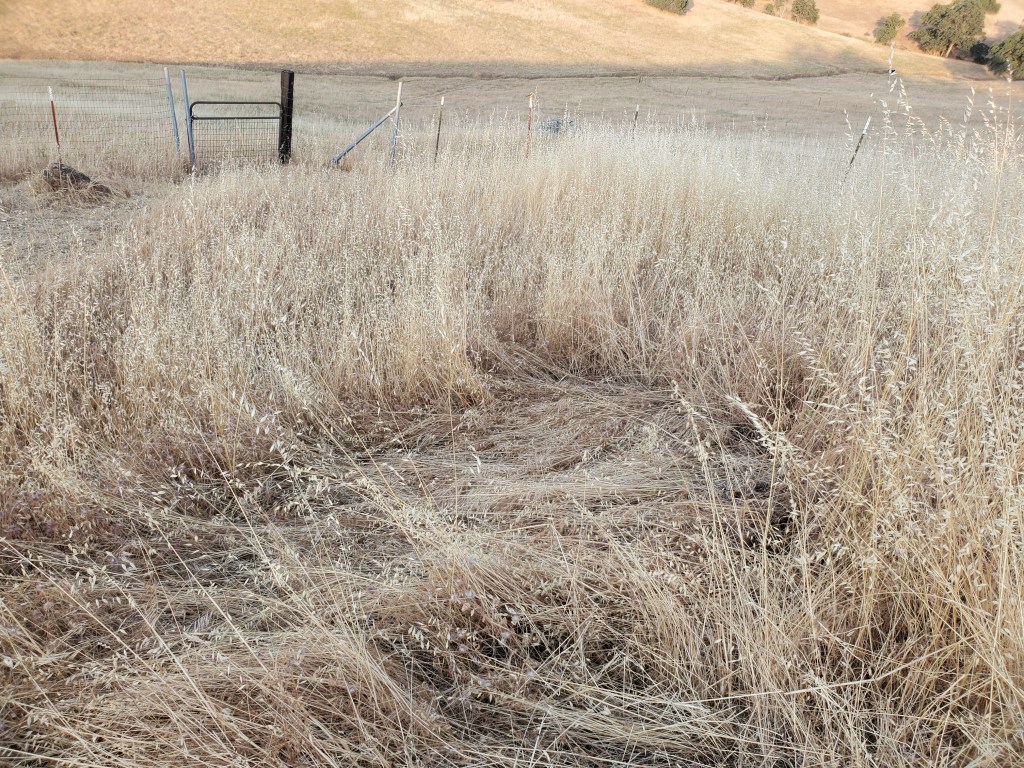
Sows (female pigs) leave their drove (or herd) to have their babies. We found the area where it appeared the large mother bedded down. I don’t know if she birthed her babies close to the house, but it seems she felt safe enough obscured in the tall grass, David had yet to cut, to have her family close by us dogs and humans. I take that as a compliment. Wild pigs are non-native and very destructive to the ground (If you look at an early blog post “Wild Pig Attack”, you will see how they ripped up one of my first pollinator plots.). However, it is a privilege and wonder to see anything as unique as this.
Planting Seeds for the Months Ahead
I spent the morning the other day cleaning up, repotting, and planting seeds in the seed tray. I seeded marigolds, black-eyed susan, coneflower, and road-side sunflowers. I also put in some seeds for my garden – spinach, tomato, basil, carrot, radish and dill. I have been eating out of the garden -lettuce, arugula, peas, chives, mint and onion – and want to continue through the summer. I planted a lot of basil. My sister enjoys making pesto, and I greatly enjoy eating it. I plan to bring her the 18 seedlings for her cooking pleasure.
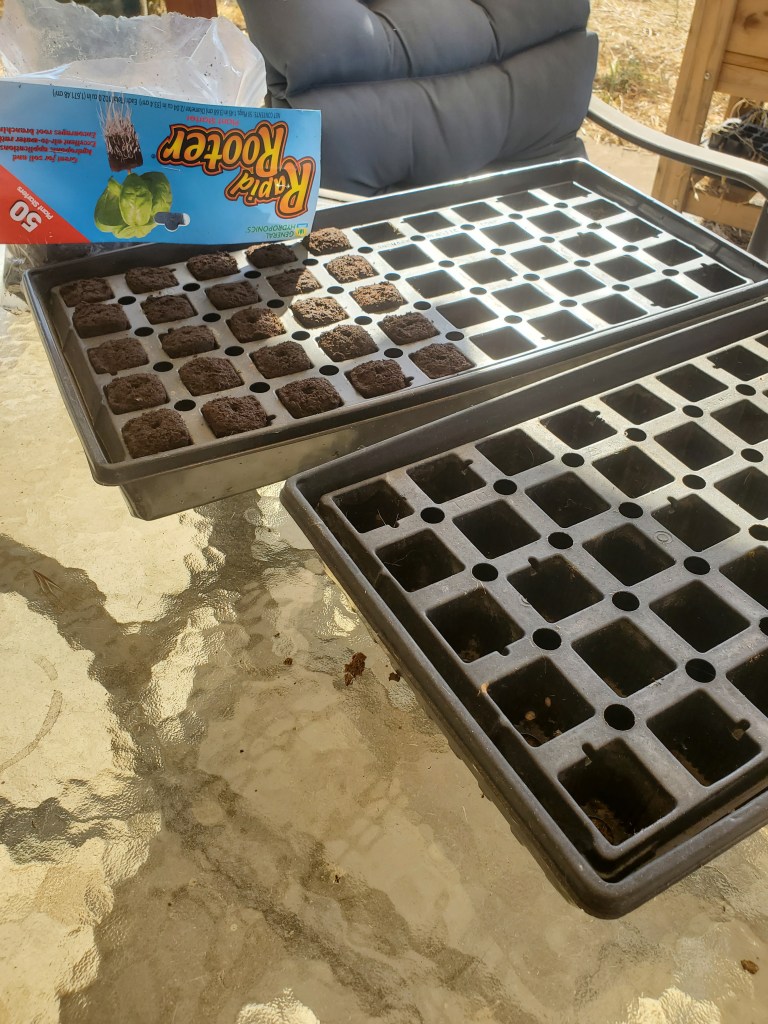
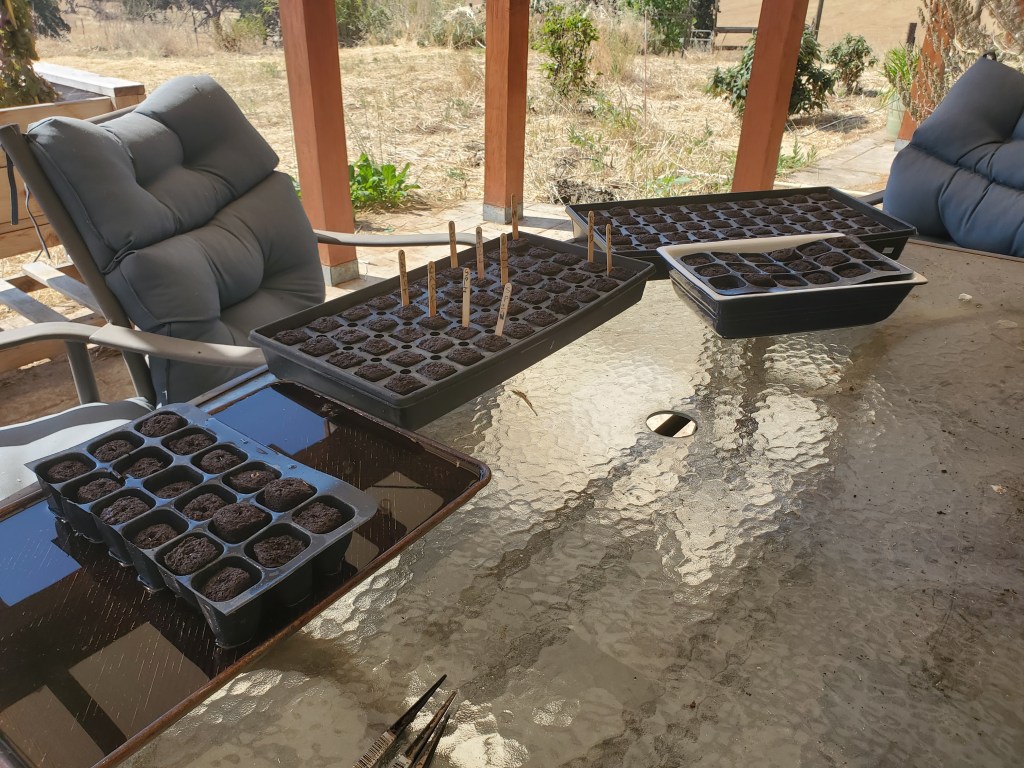
Wanderings
Bright sides. This September, it will be four years since I began this habitat journey. I will save my full reflections for an anniversary post, but, despite the heartbreaks, stickers, and injuries, this ride has been one of the best things I have done with my abilities. I have learned incredible things. One is to chill out and look on the bright side. This spring we have not had many raptors, which is highly unusual. In fact, it has never been that way in the open grassland part of the ranch. The sky has has never seen a day without a red tail. My ears have captured the bouncing chords of p-eee-ahh, p-eee-ahh and brought them inside my head, and then to my heart, every day. There is a family that lives on the hill. They soar with their babies about now, in threes and sometimes fours, if one from the previous year makes it home. My ranch is named after them…Taawe Bwia, or land of the hawk, in my native language. Where are all the taawim (hawks)?
During the deluge this past winter, the drops turned to torrents, cascading downhill, filling every hole and then coming out every hole, spiraling, like eddys, when in the flats. I remember seeing air bubbles coming from the holes. I thought it was from the energy of the movement. But, maybe it was from what lived below.
As I look back on the blog posts, the imprints of my memories, thoughts and emotions, I see much disdain for the underground relatives, the gophers, moles and voles. Whatever was taking down my plants – I resented. While I always respected their right to live, to have families and feed their families, just as I do, I was still distraught. All the work, the expense, the hopes and desperation I had packaged in my heart, my singular focus on doing my part to help the monarchs survive, it blocked my senses, the whispers from my ancestors, telling me u betuku bwia weweriam, empo Heather hikkaha. Hikkaha (The under land relatives, Heather you listen. Listen.). Last year, I began to hear. I made peace. I remembered that they are aerating the land, allowing water to go deep to roots, allowing other creatures, like bees and snakes to have homes when they are not there. They are teaching me what belongs and at what scale. They are helping me access soil so I don’t have to dig, and they are bringing in yo’oem (my ancestors), the hawks to me. They give their lives for Taawe. The gophers have been so generous, and I have been so ignorant. Without them, their size and numbers, Taawe cannot be here – and that is a tragedy. Taawe eats mice, lets me know to be alert when something is passing through, reminds me how we are connected to above and below, and reminds me that I am seen, even when I think I am alone someplace or in my mind’s space. I am part of something.
Today, as I walked among the yarrow that is finally spreading beyond the cages, I saw a bloom wiggle, then drop. A crunch, crunch. Another wiggle, then drop more, then one more time and crunch, crunch. I did not try to interfere. I did not growl. A slight smile crossed my face. I said, “Take what you need.”
Taawe will be home soon.


